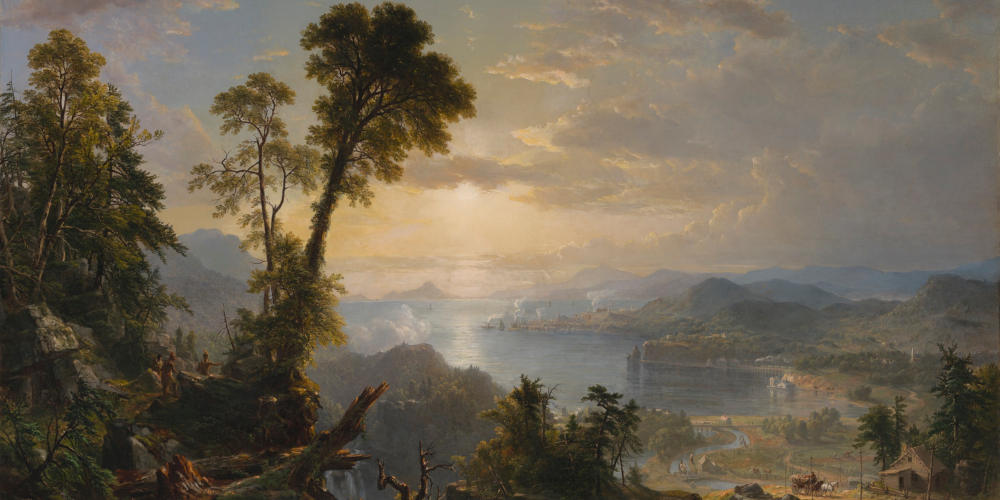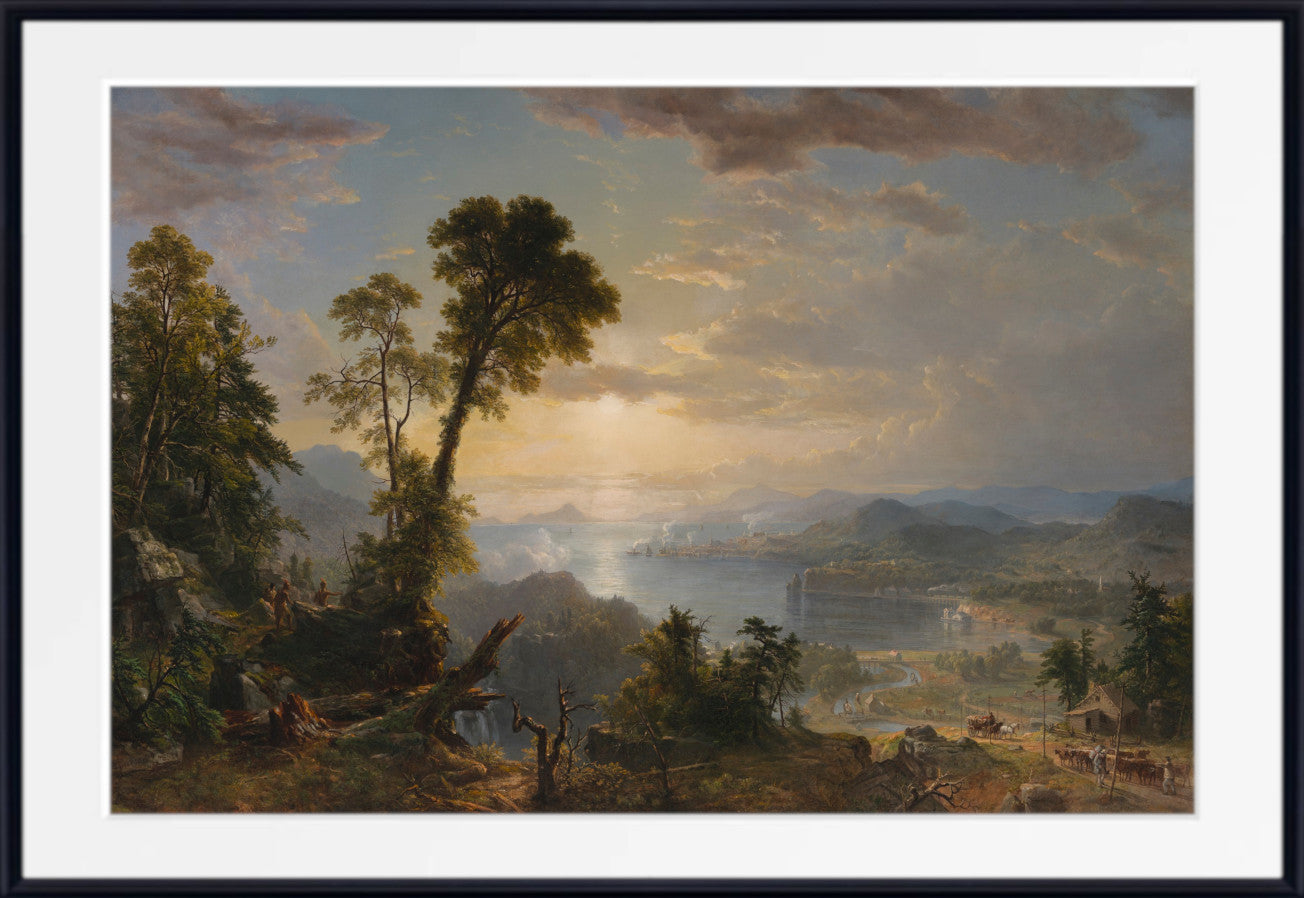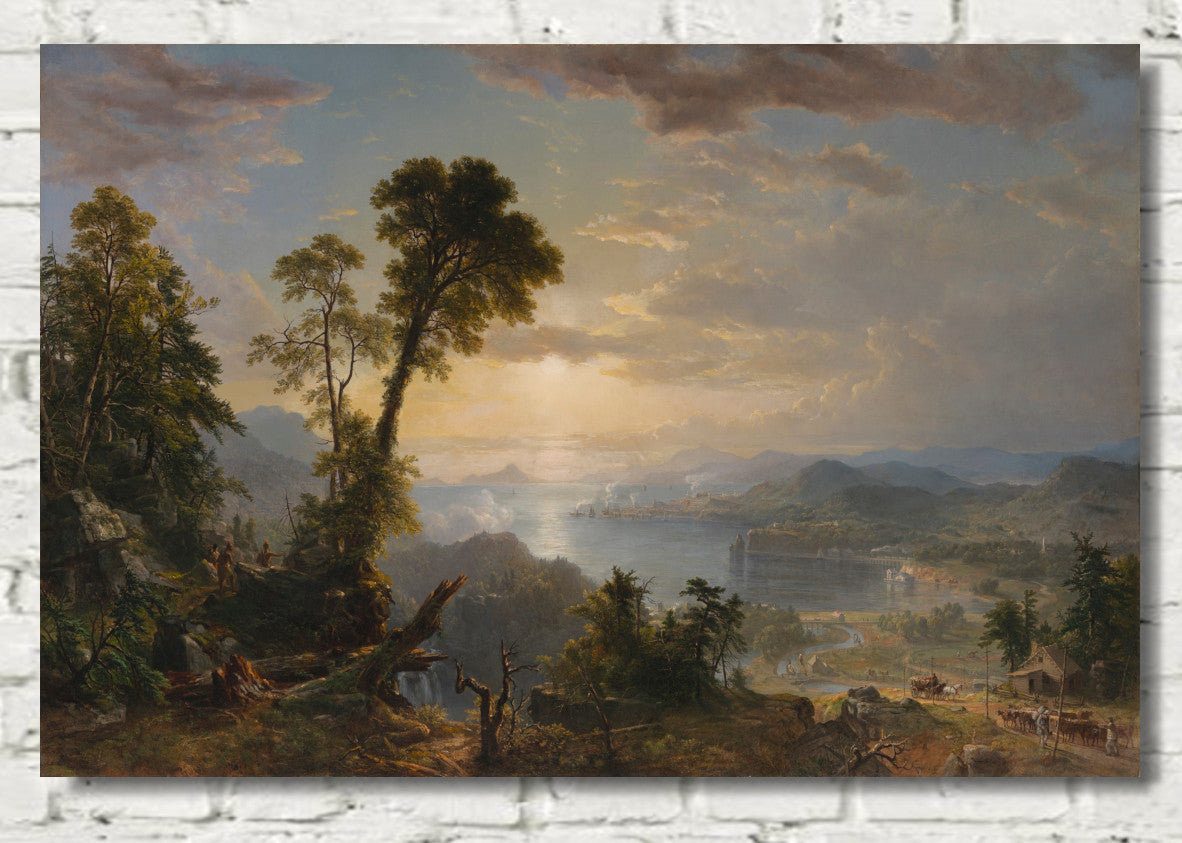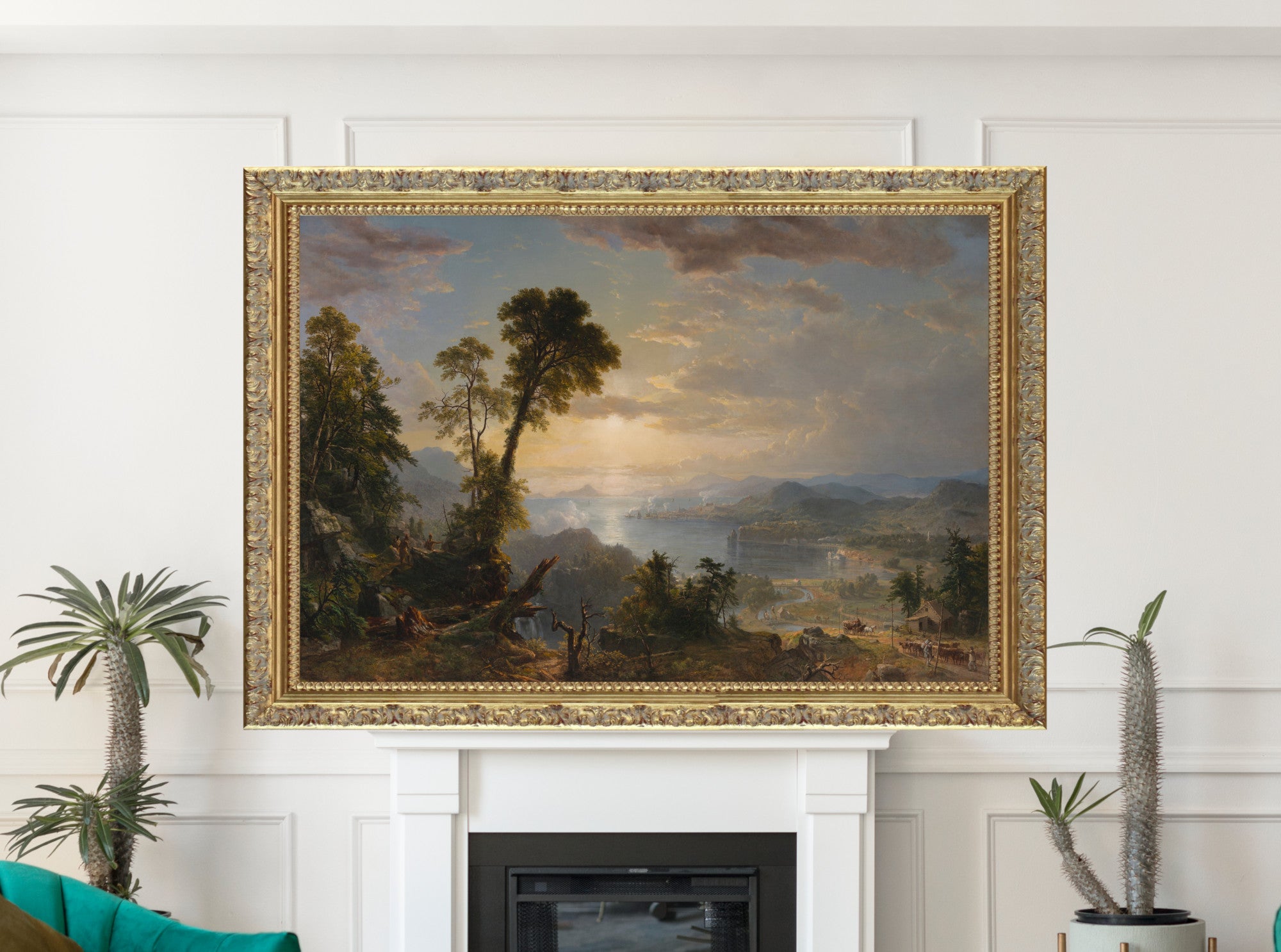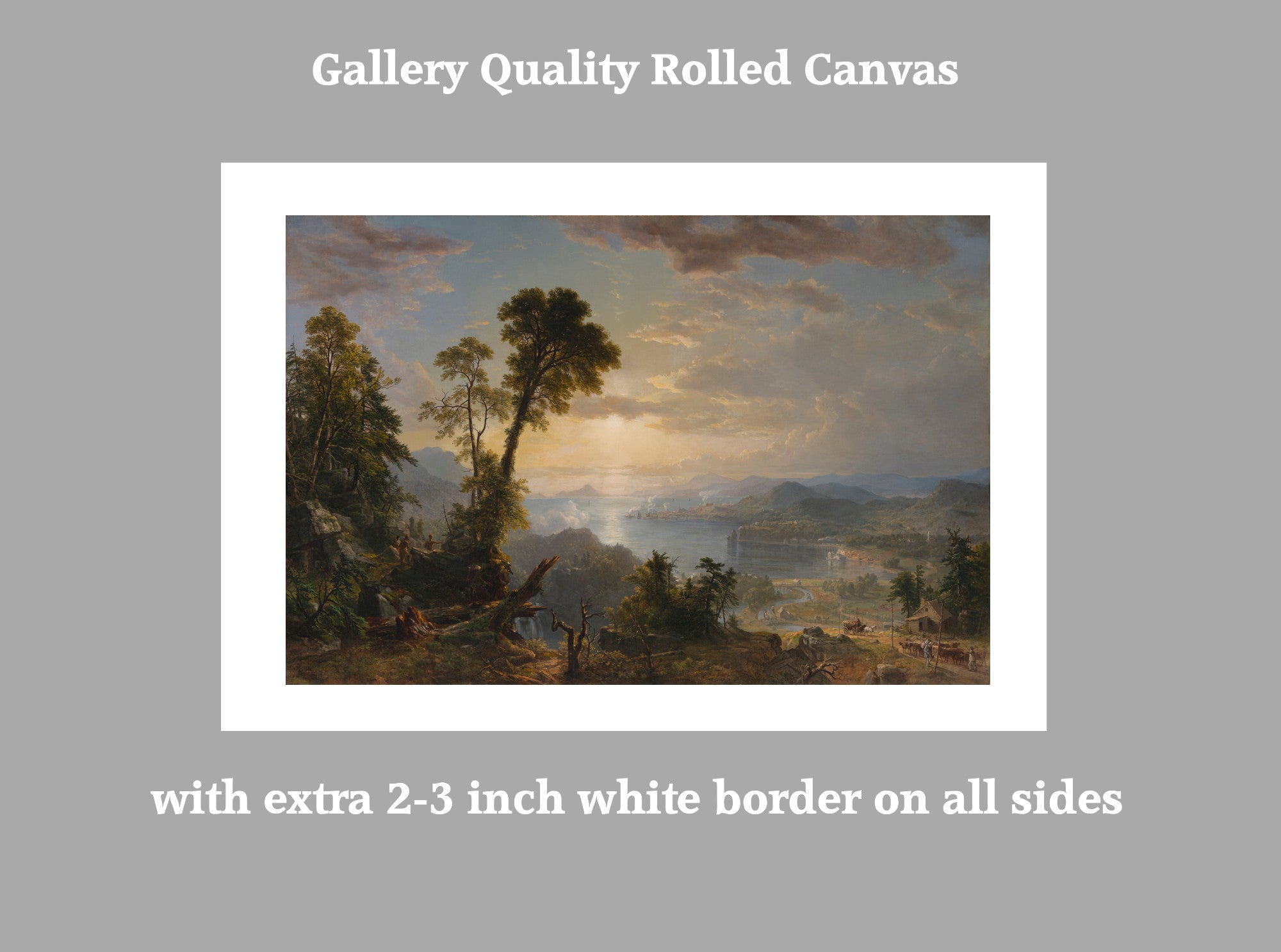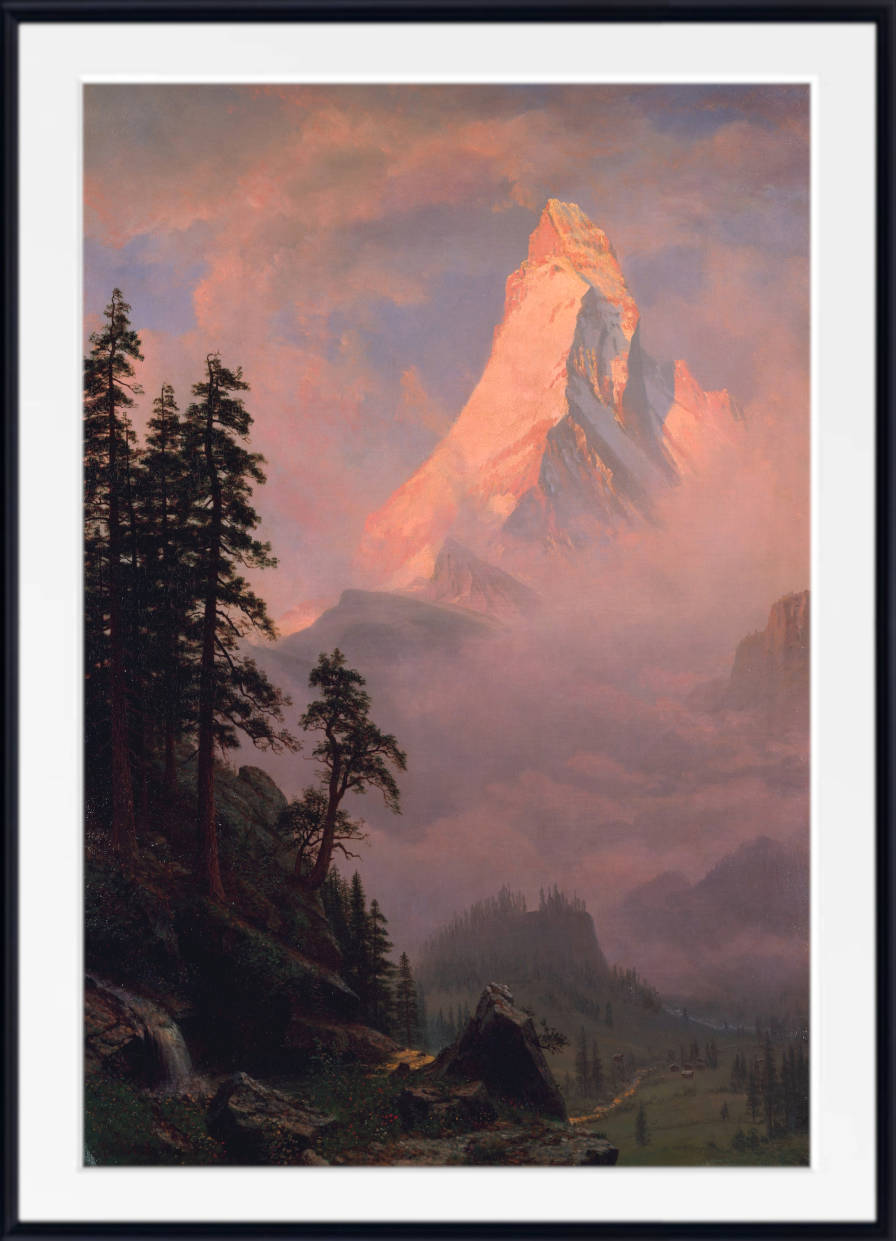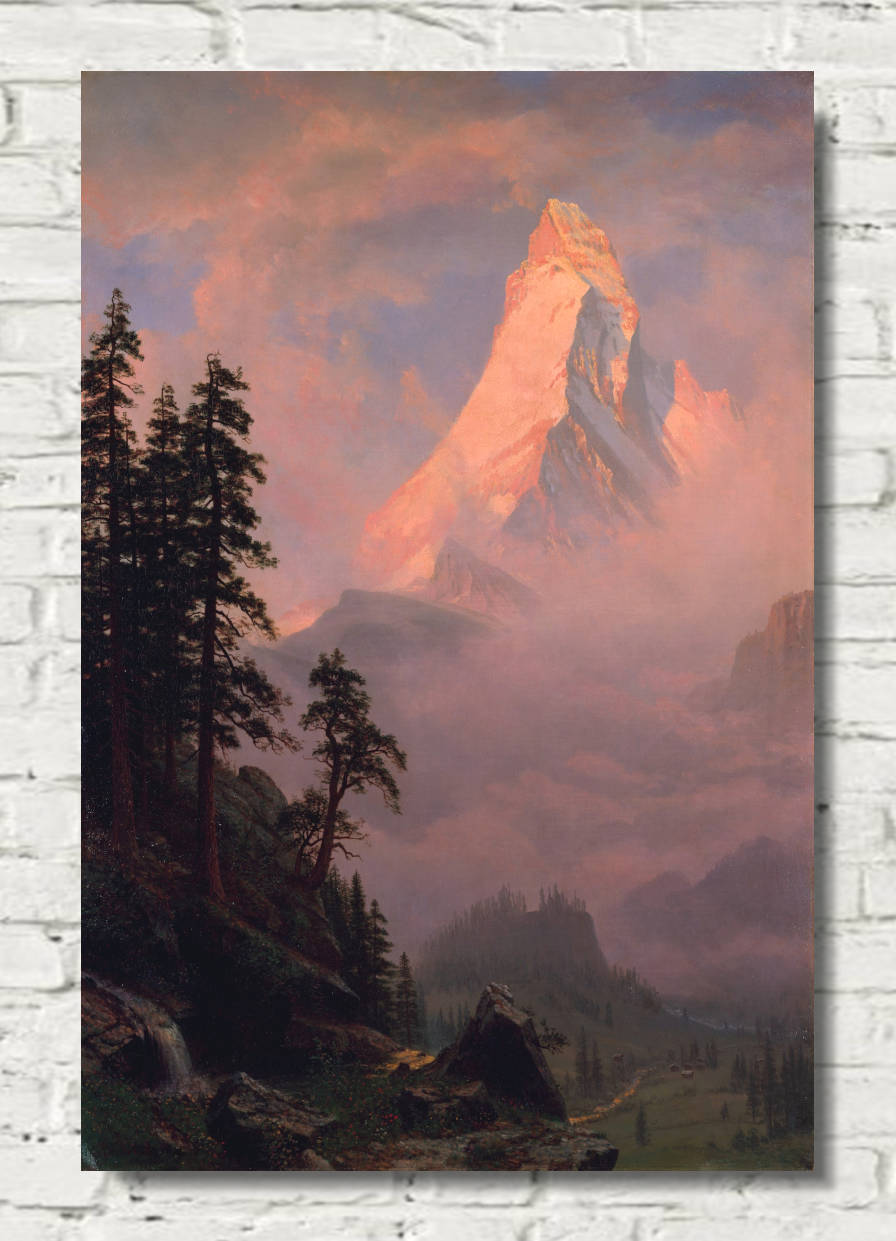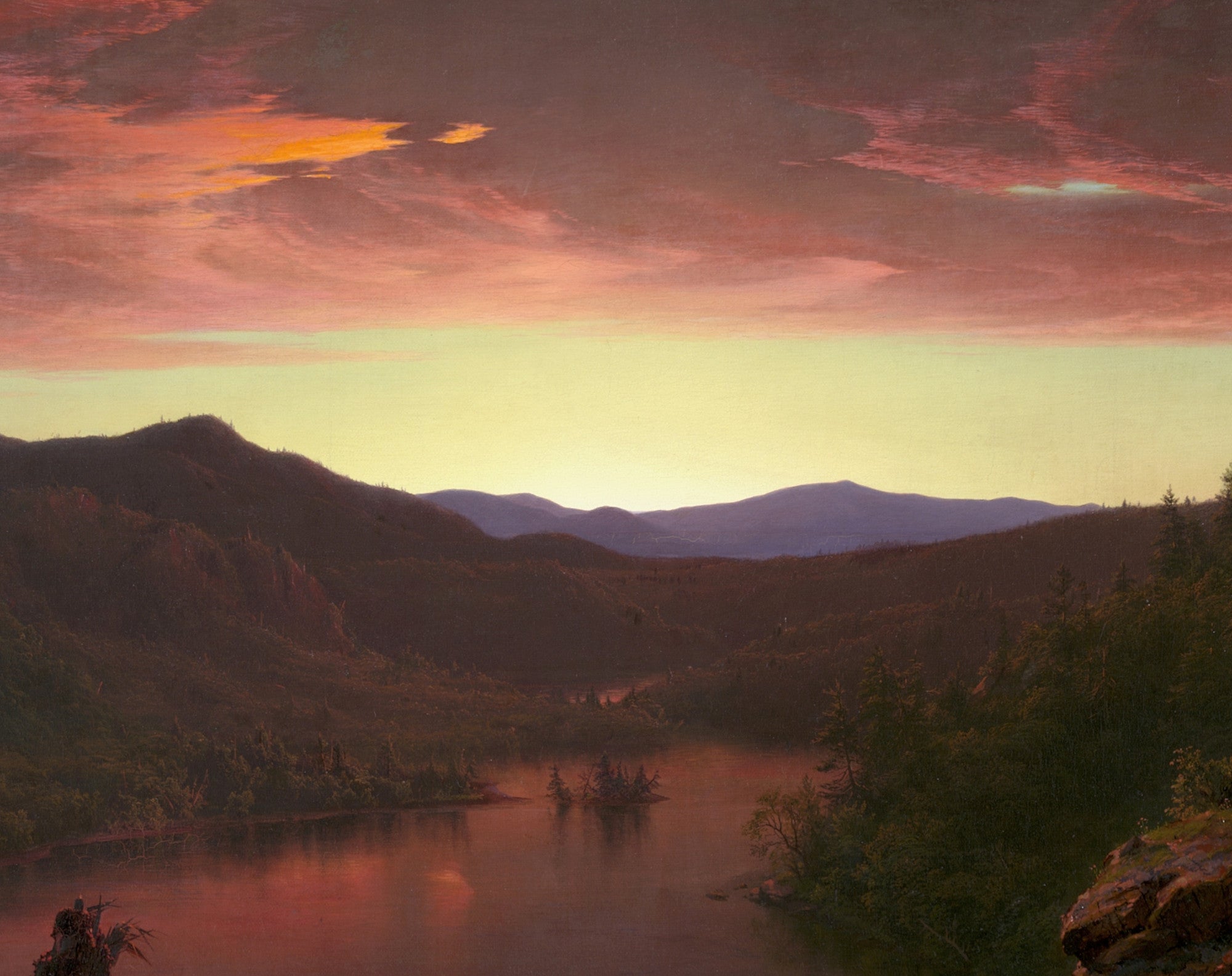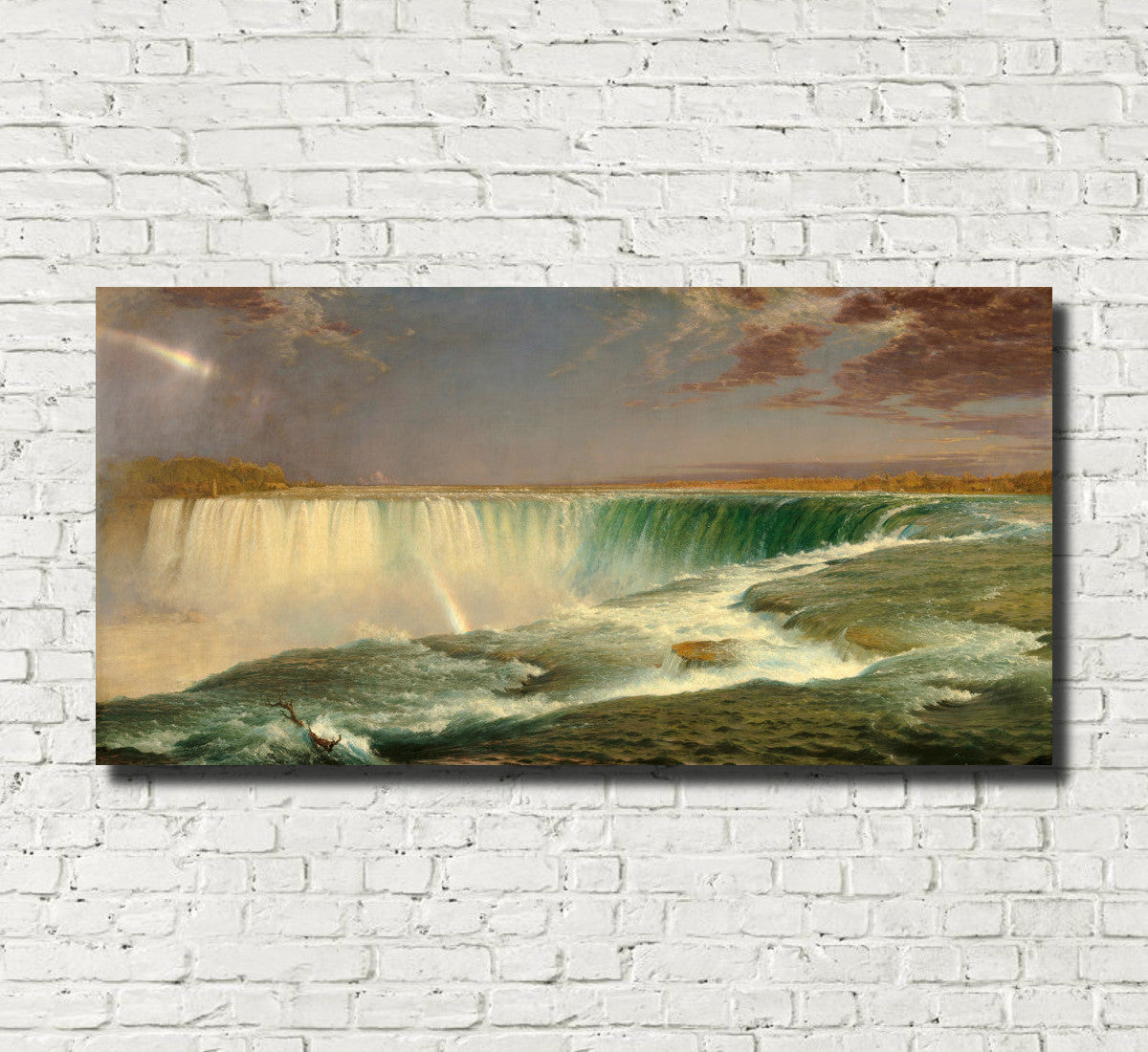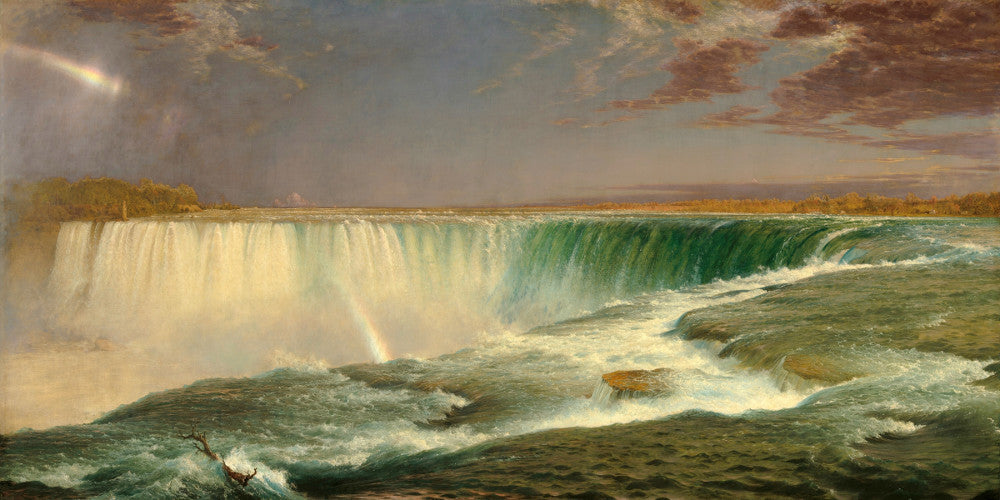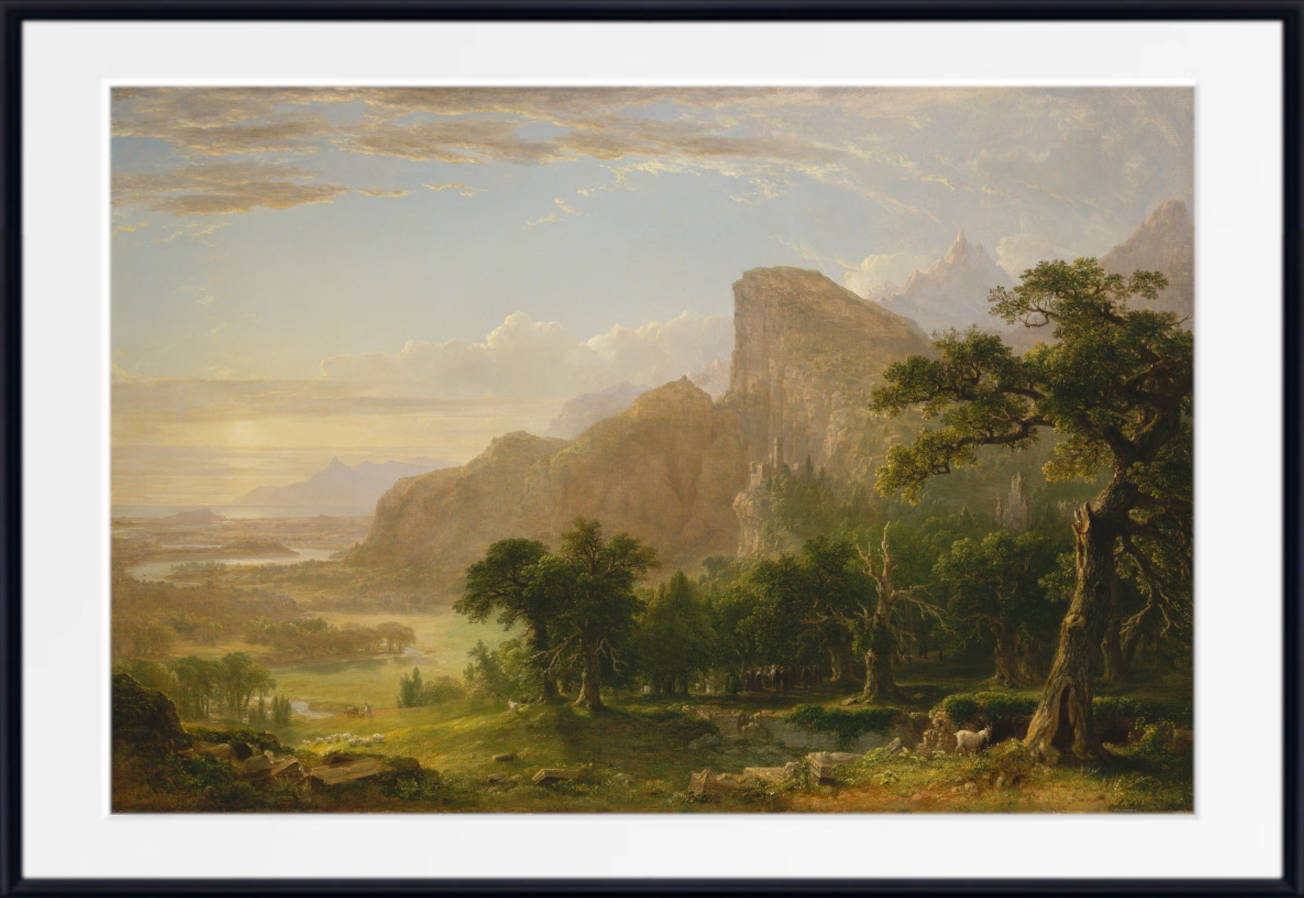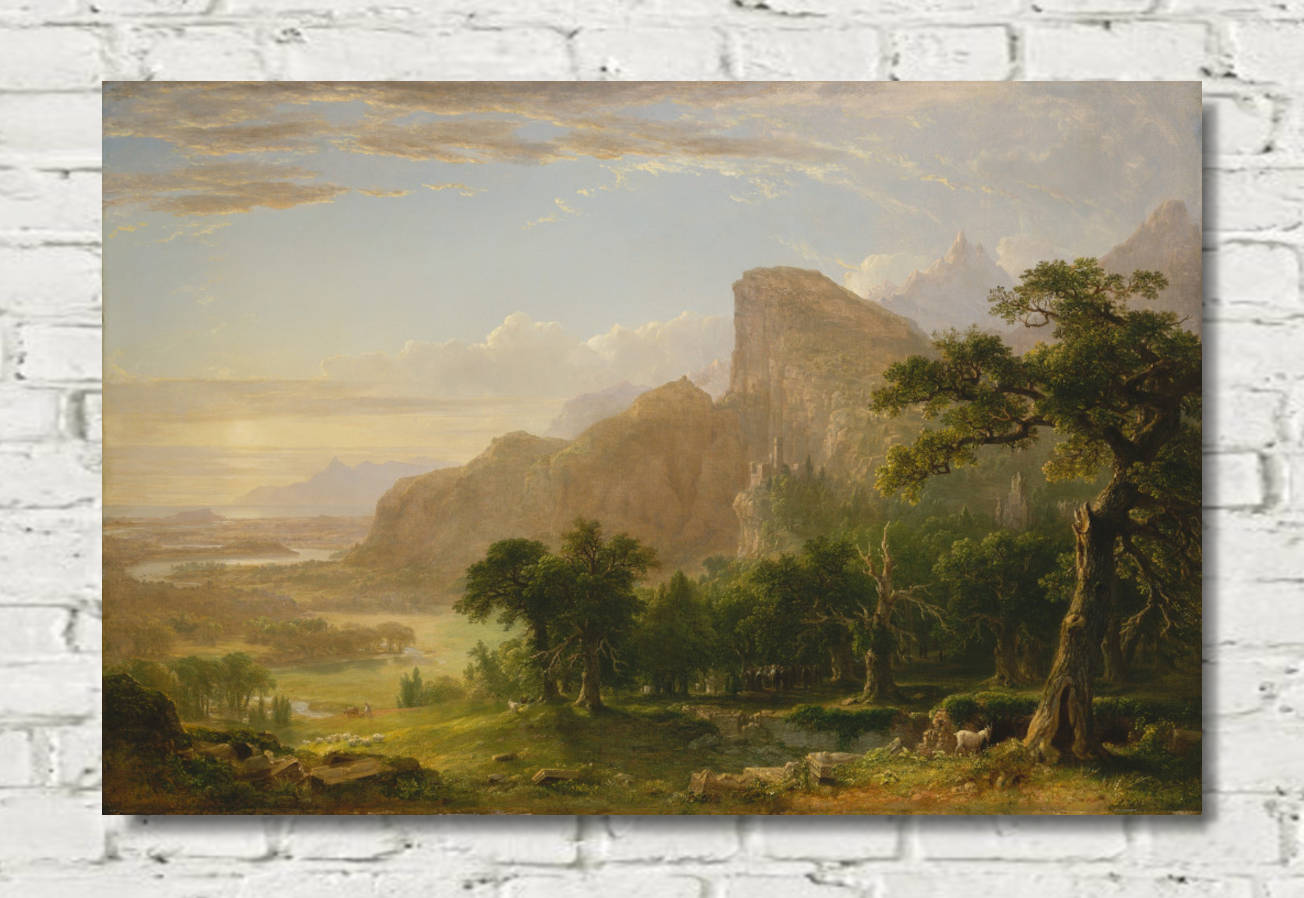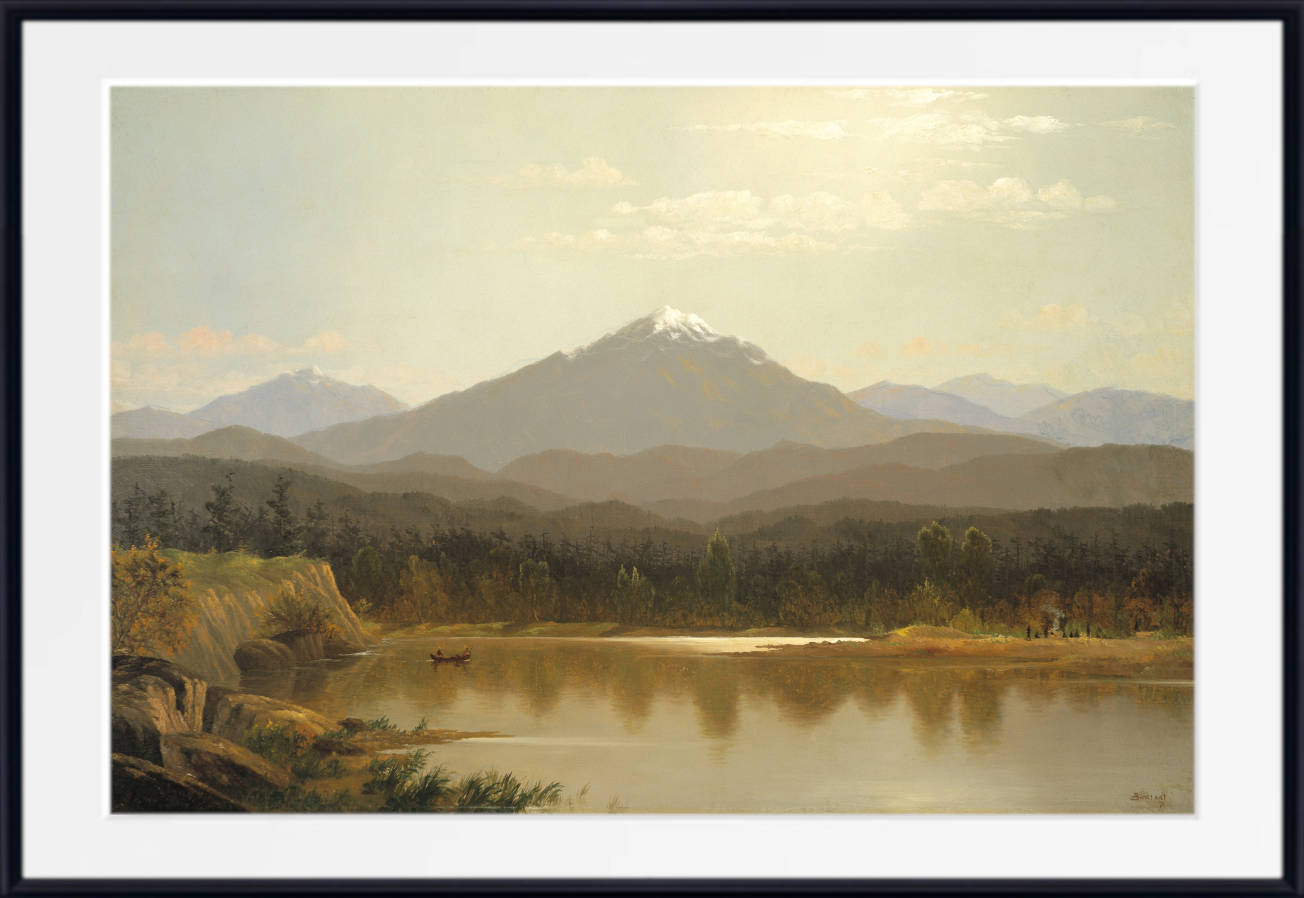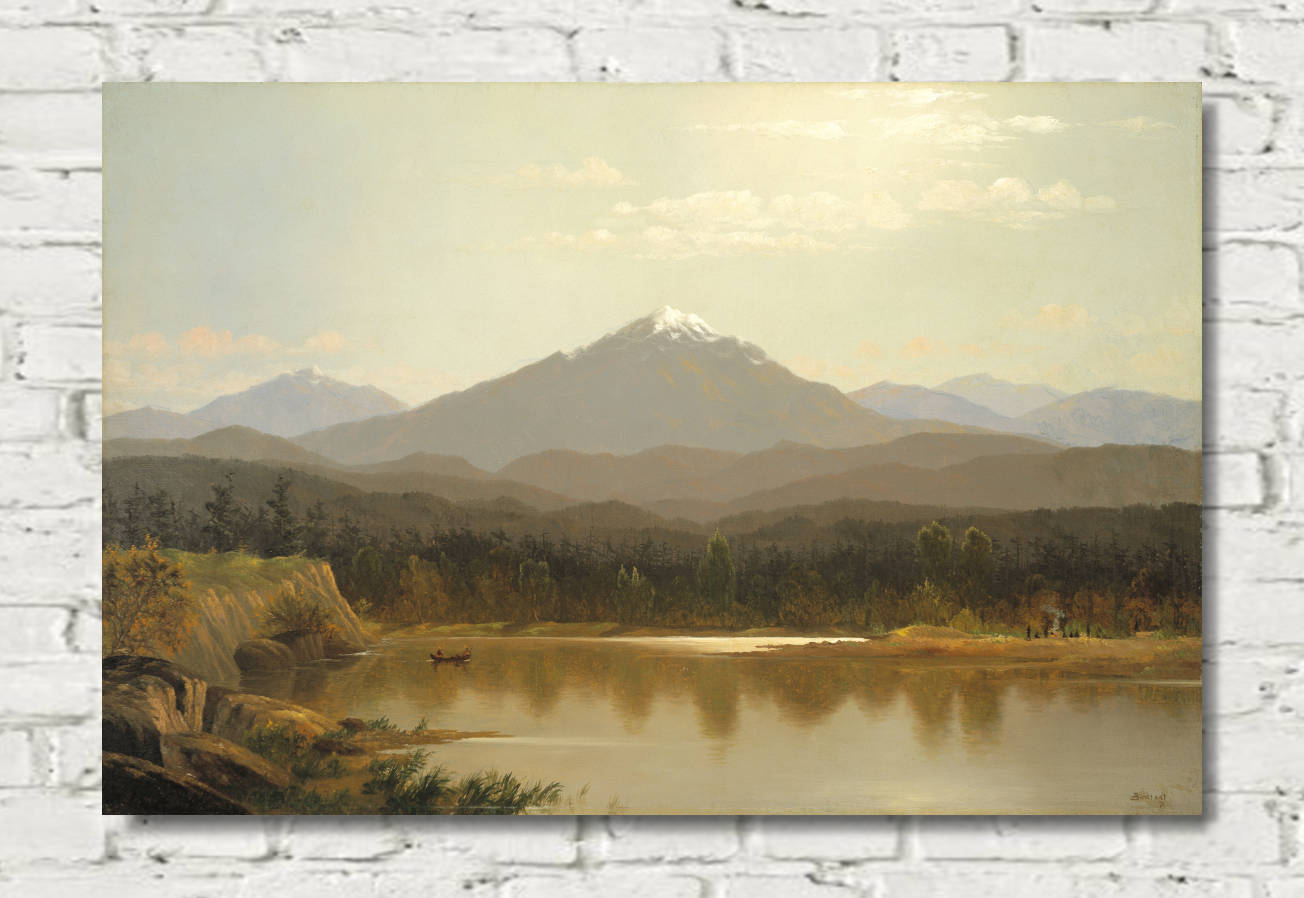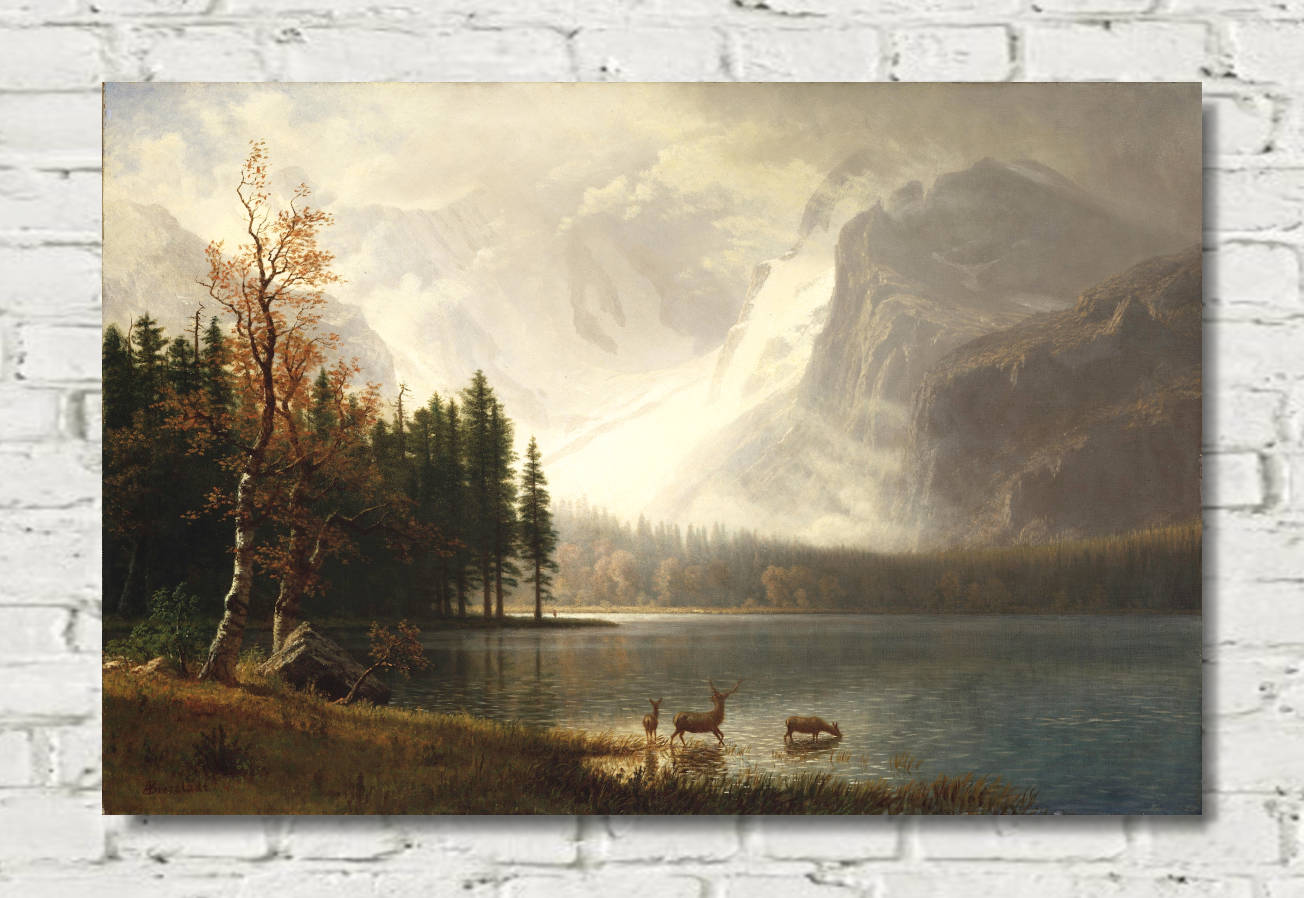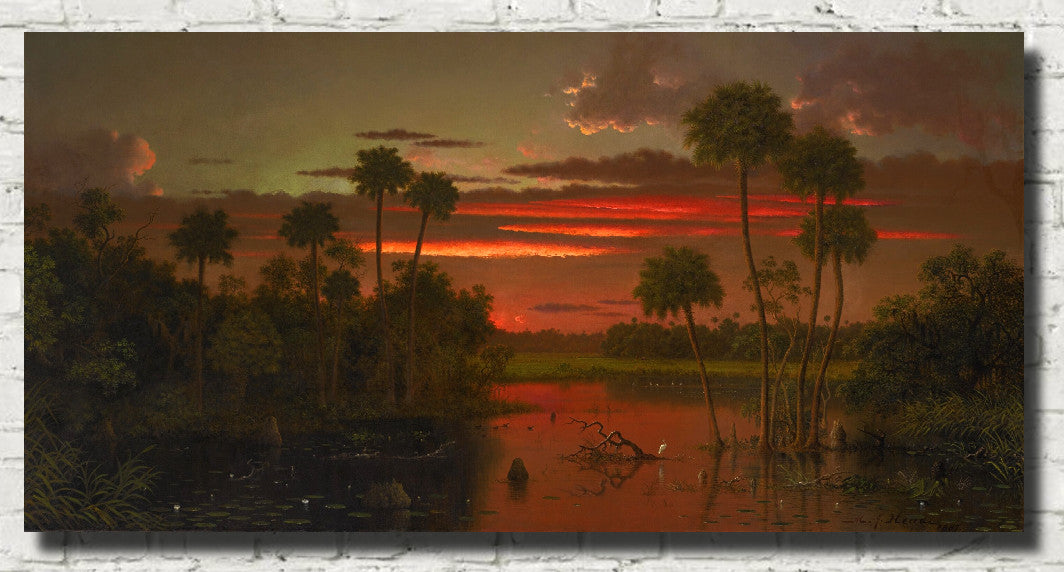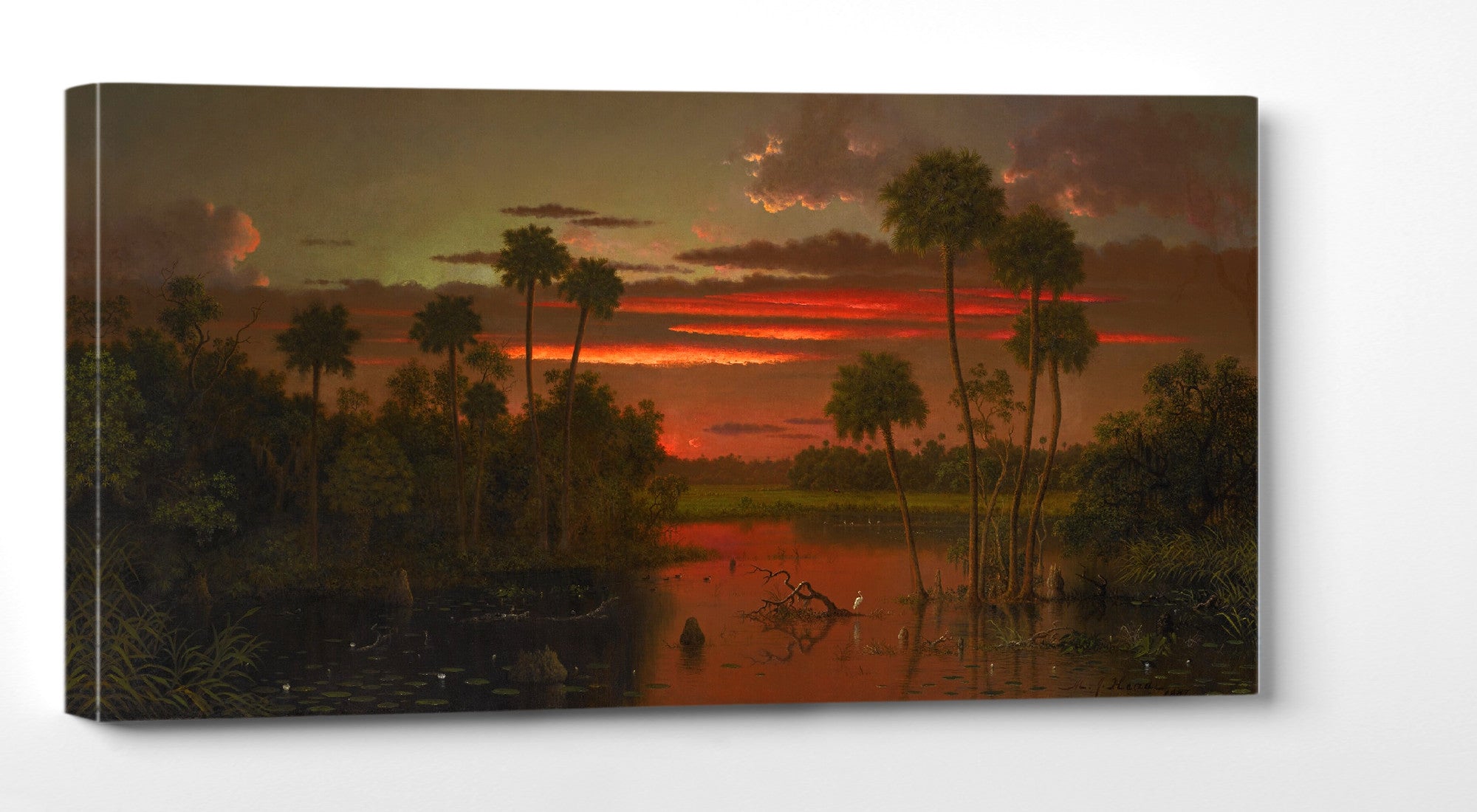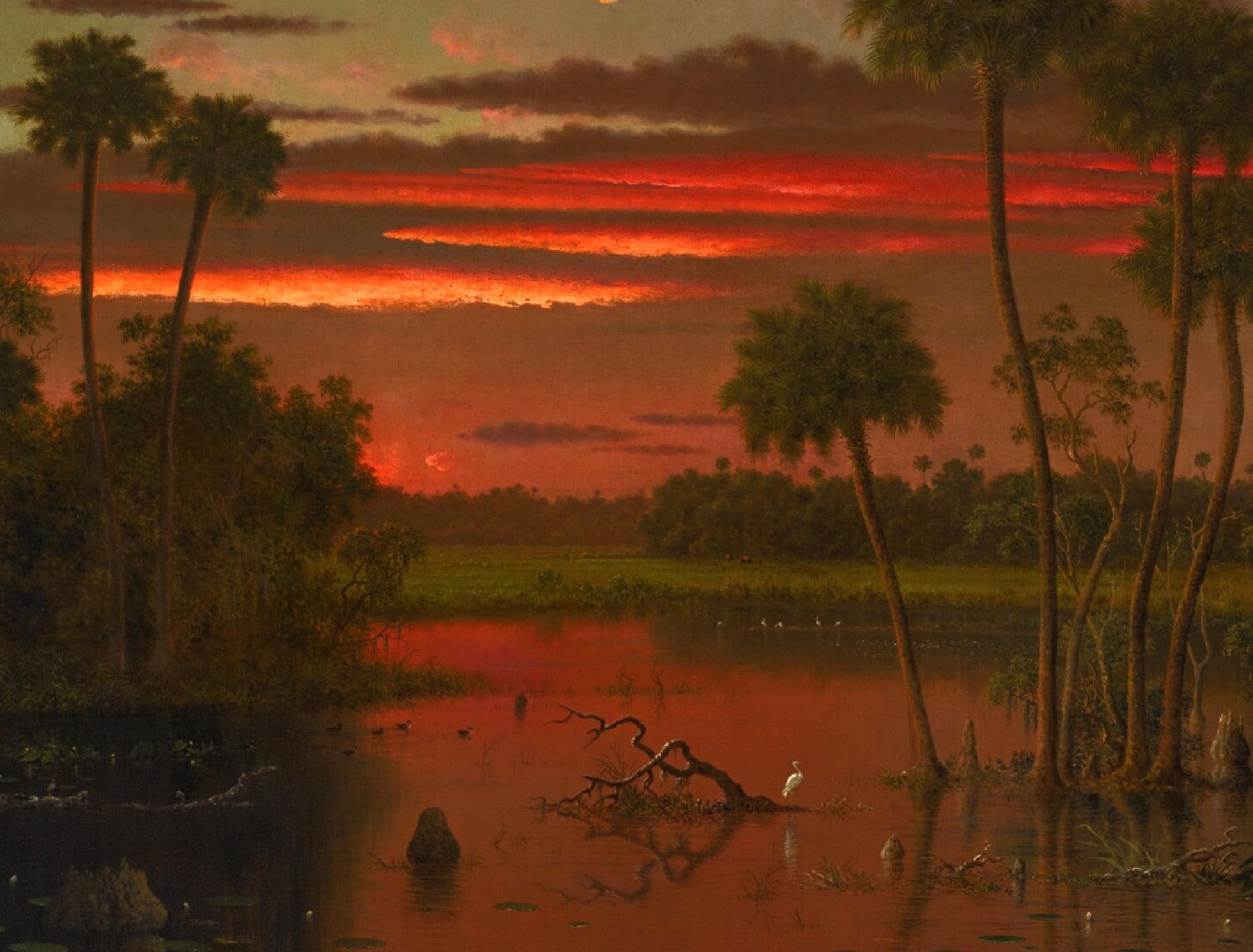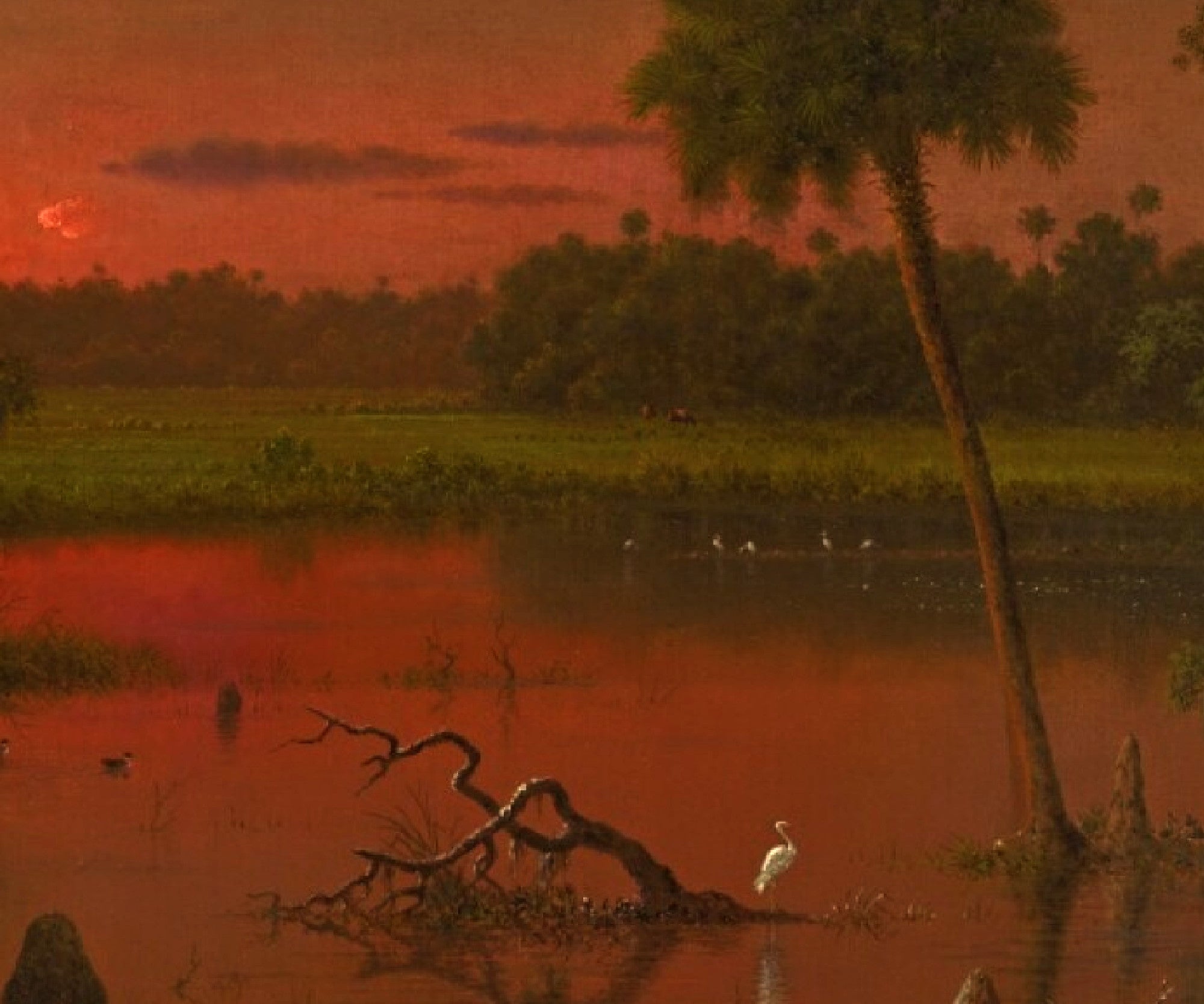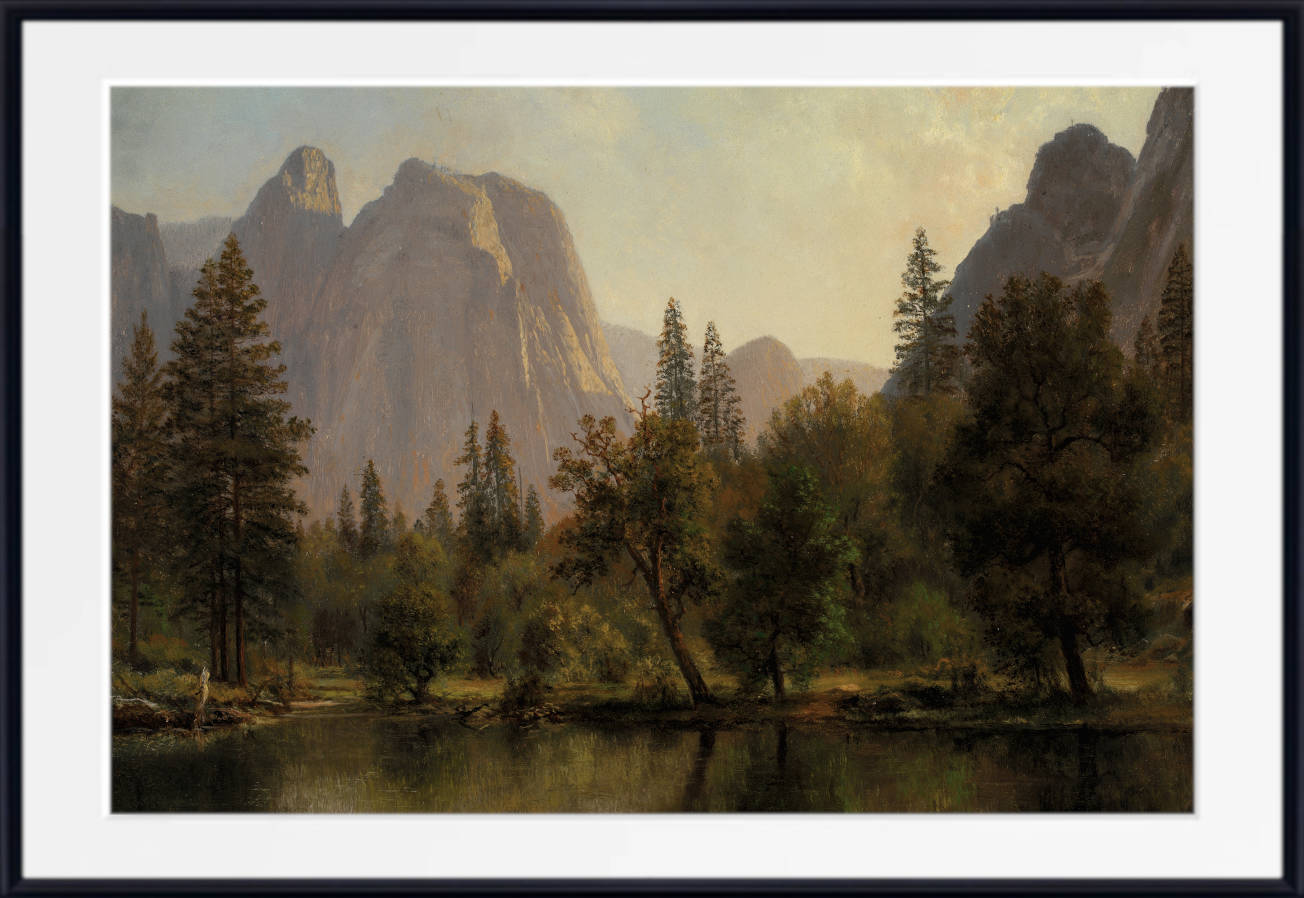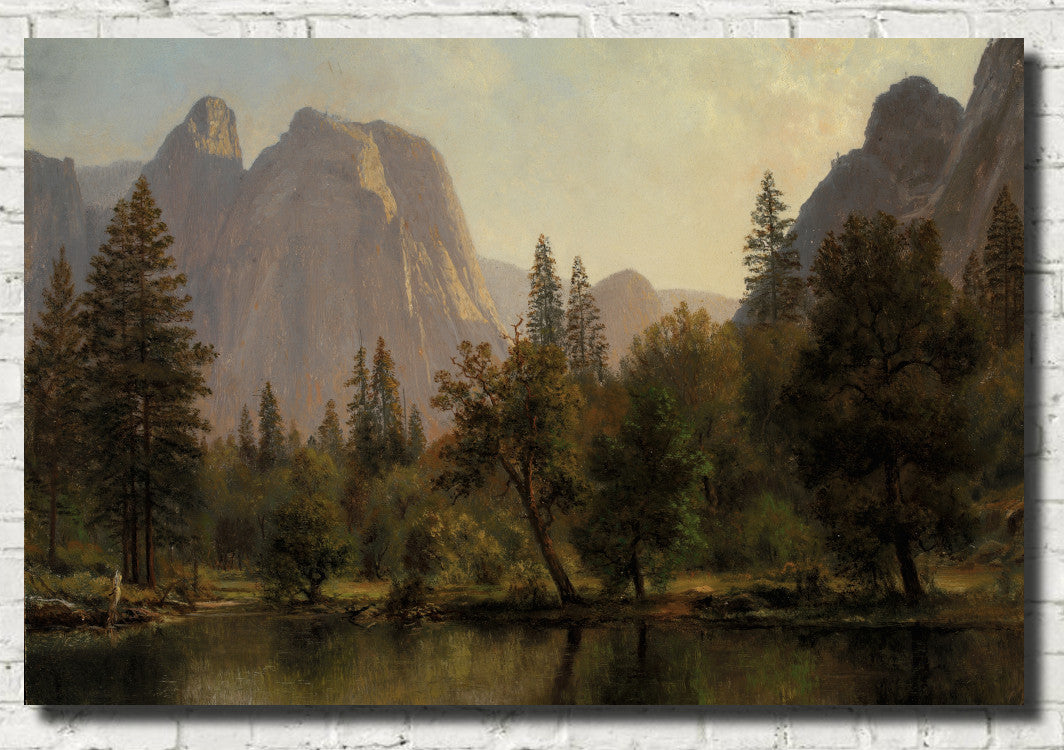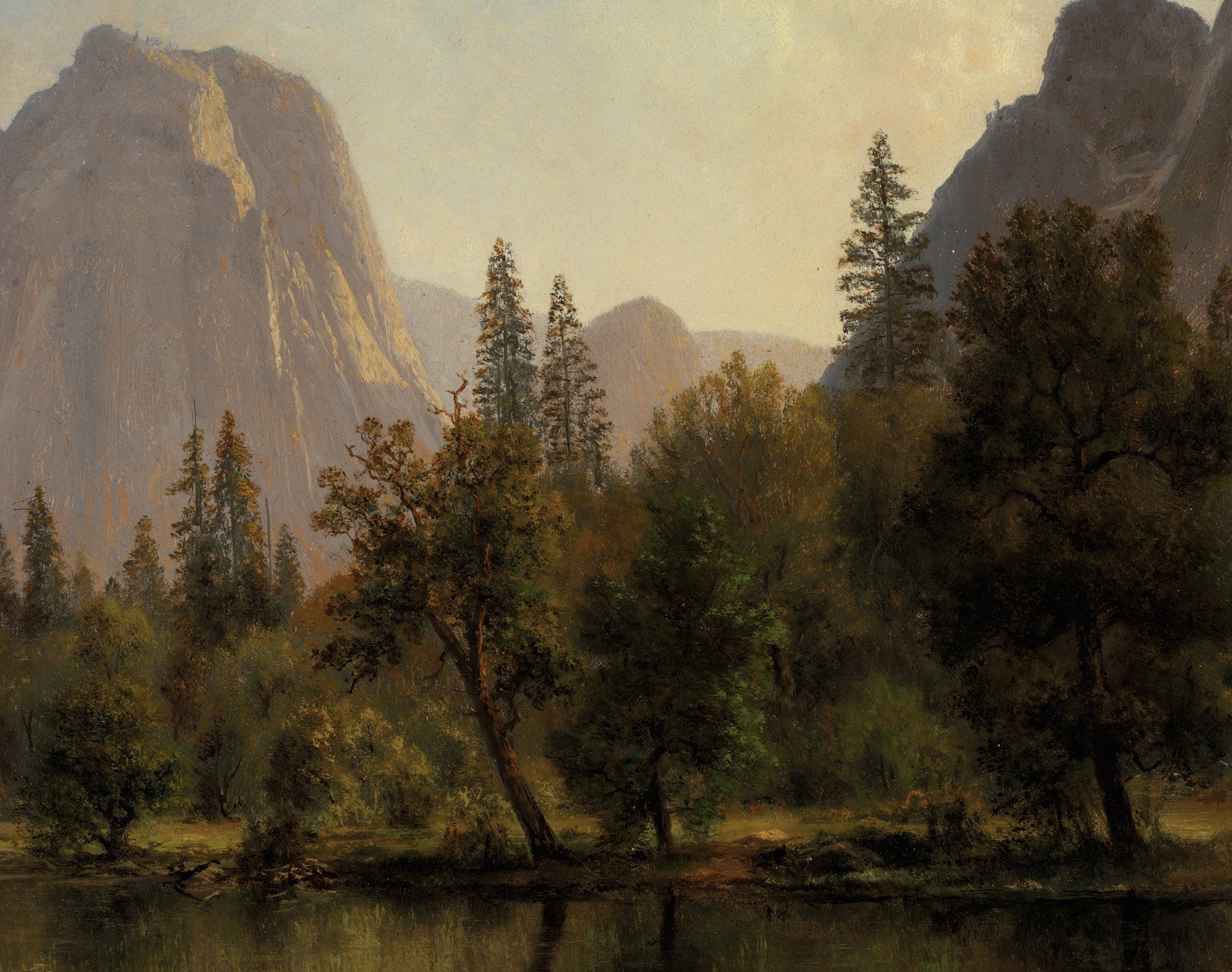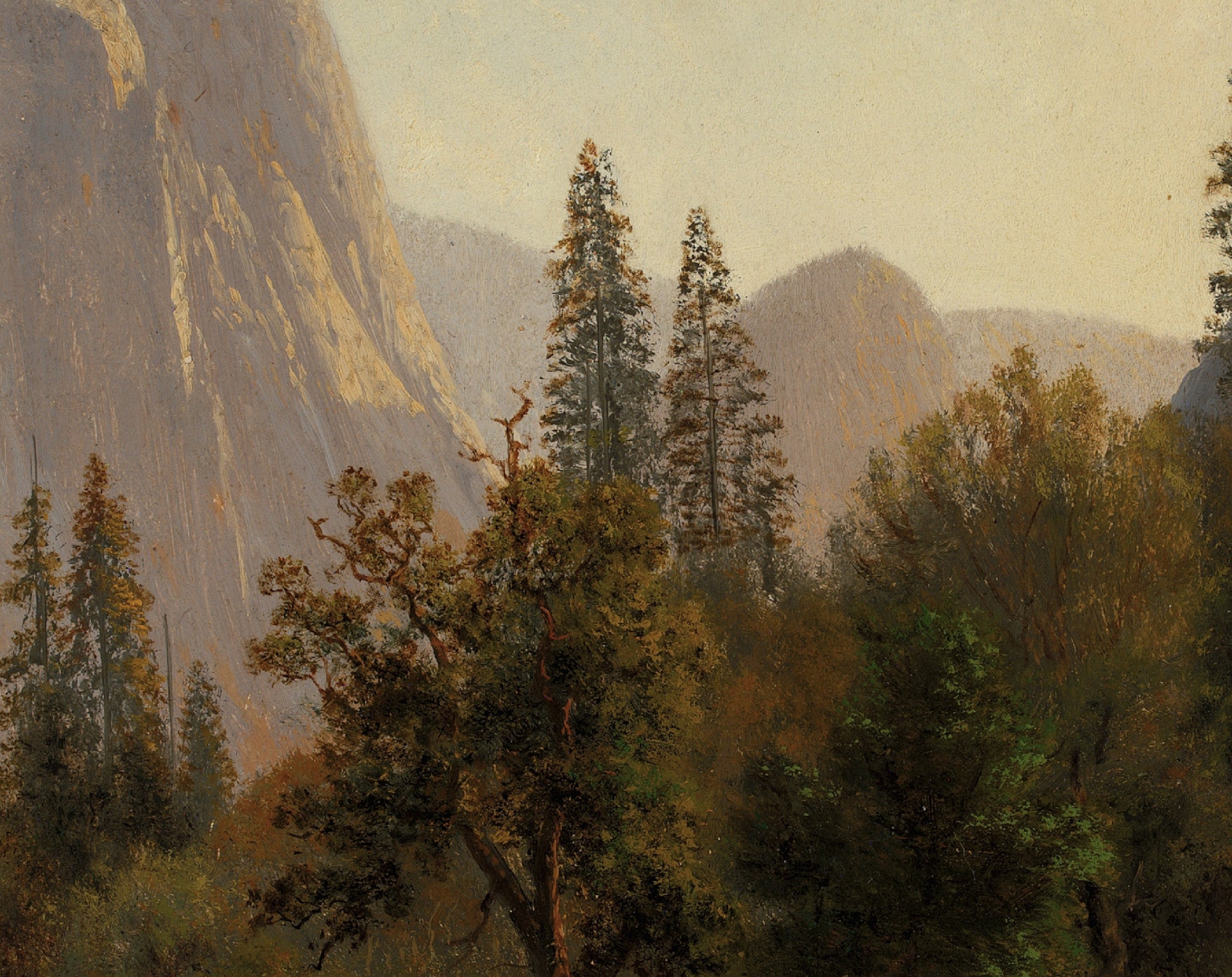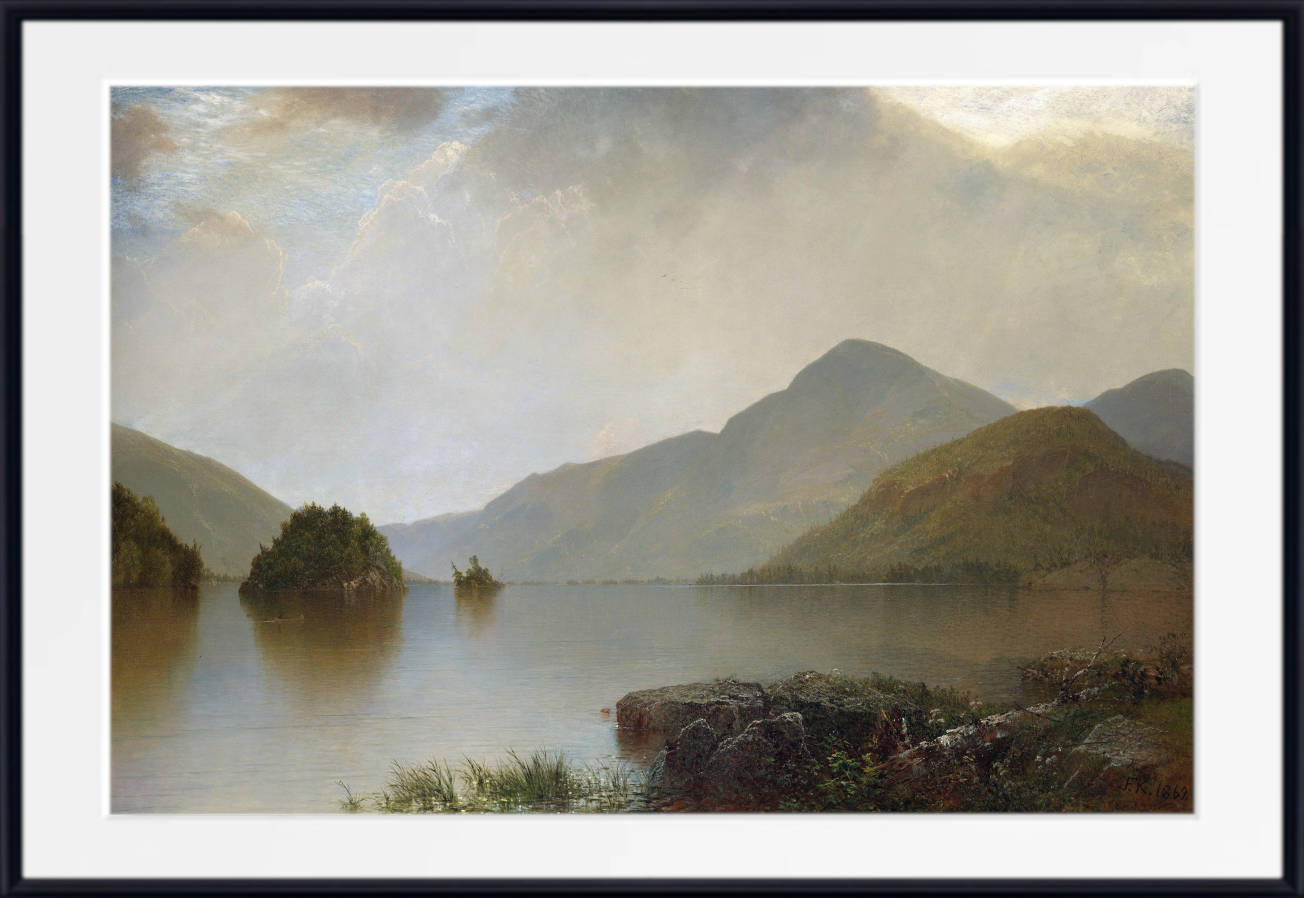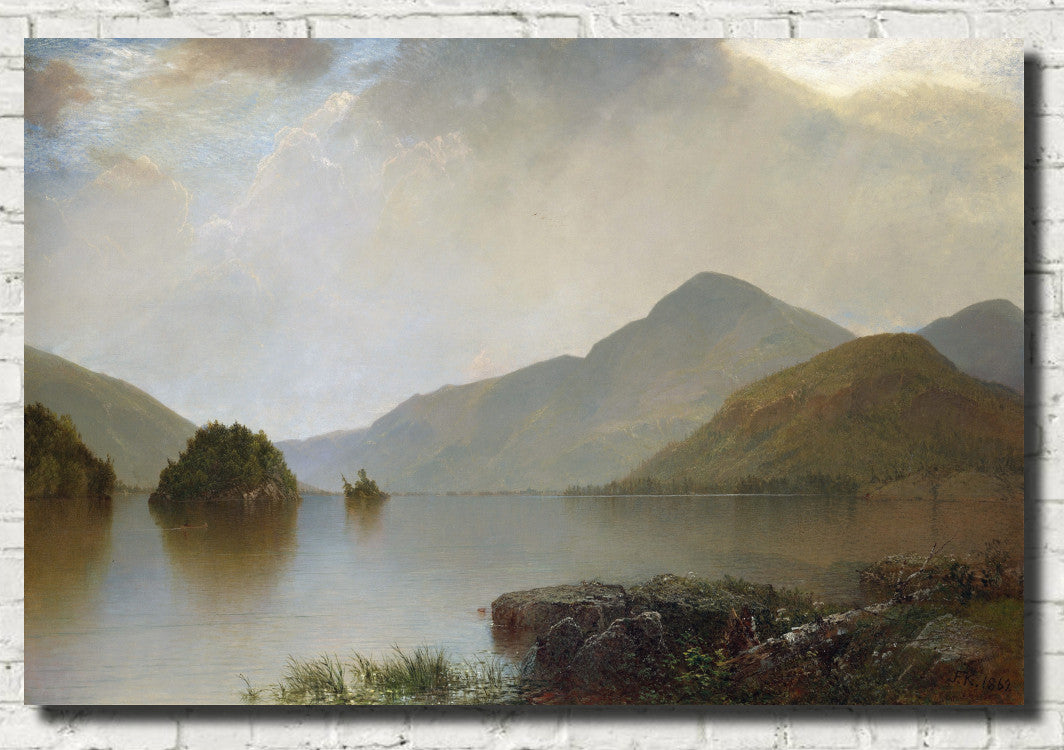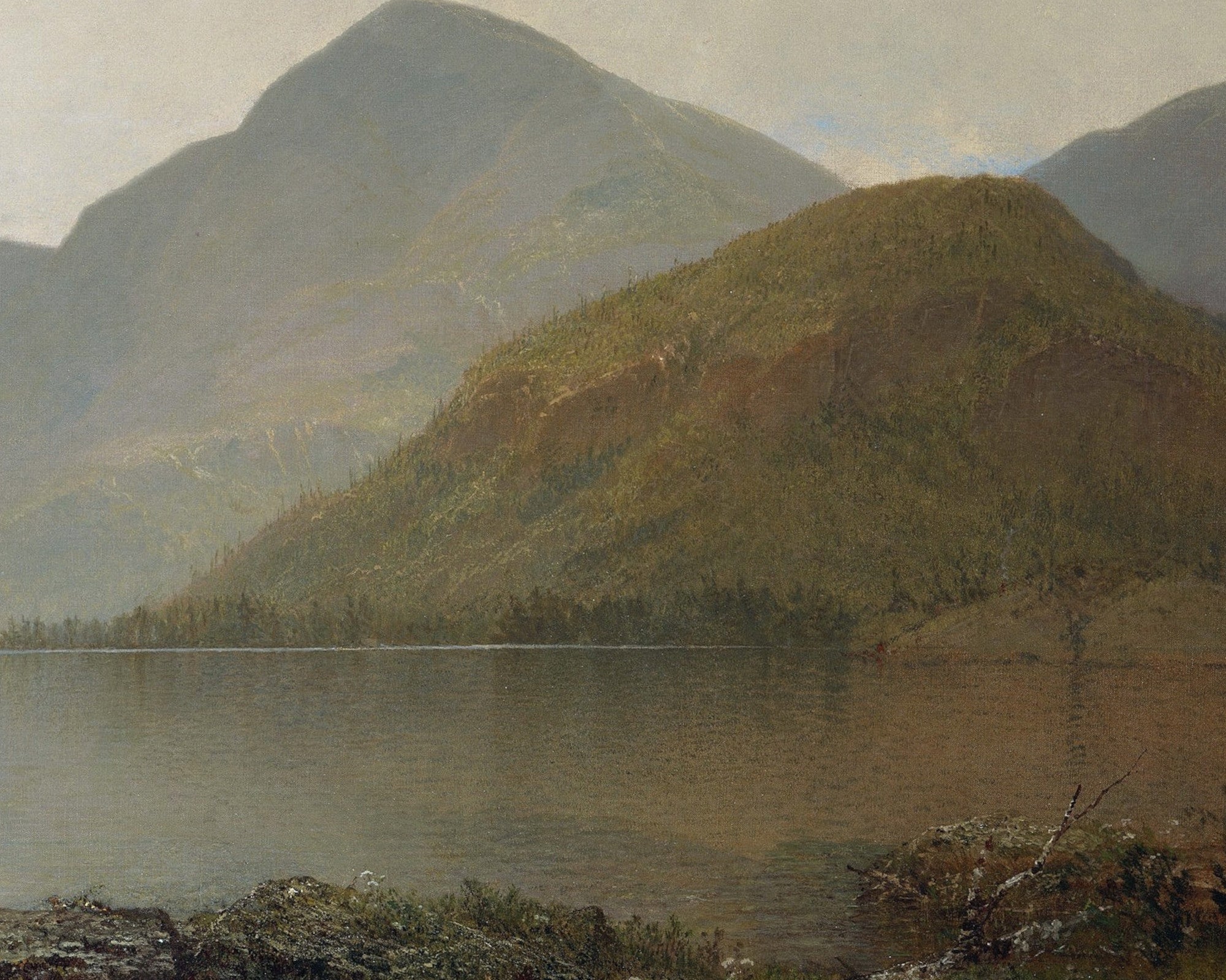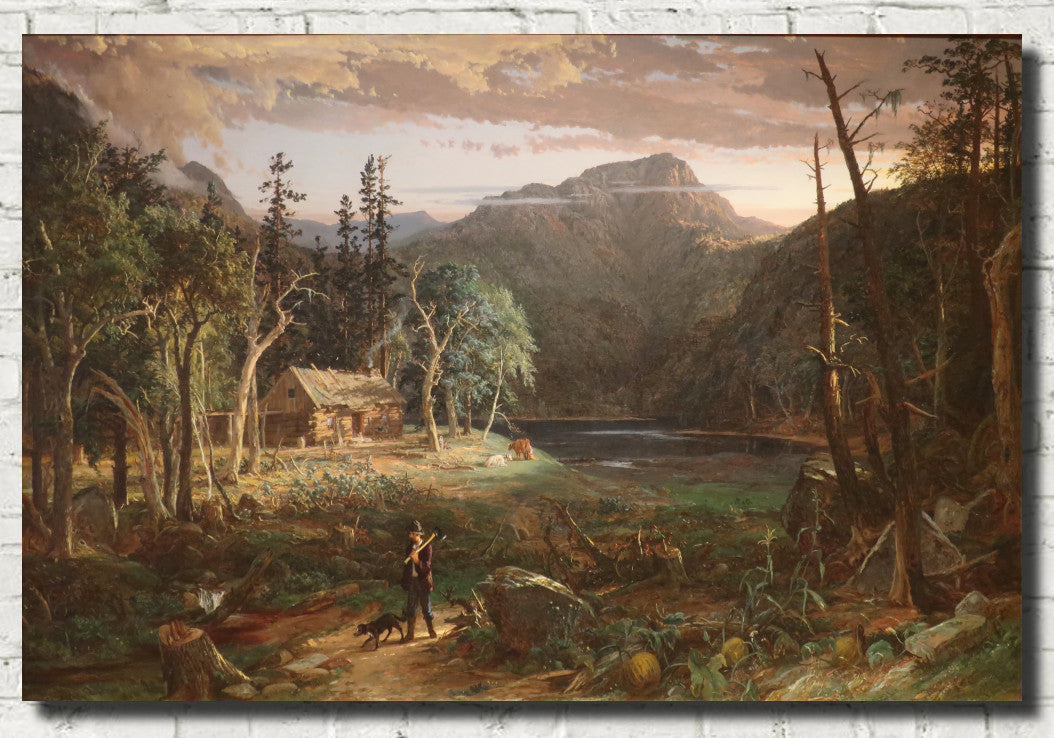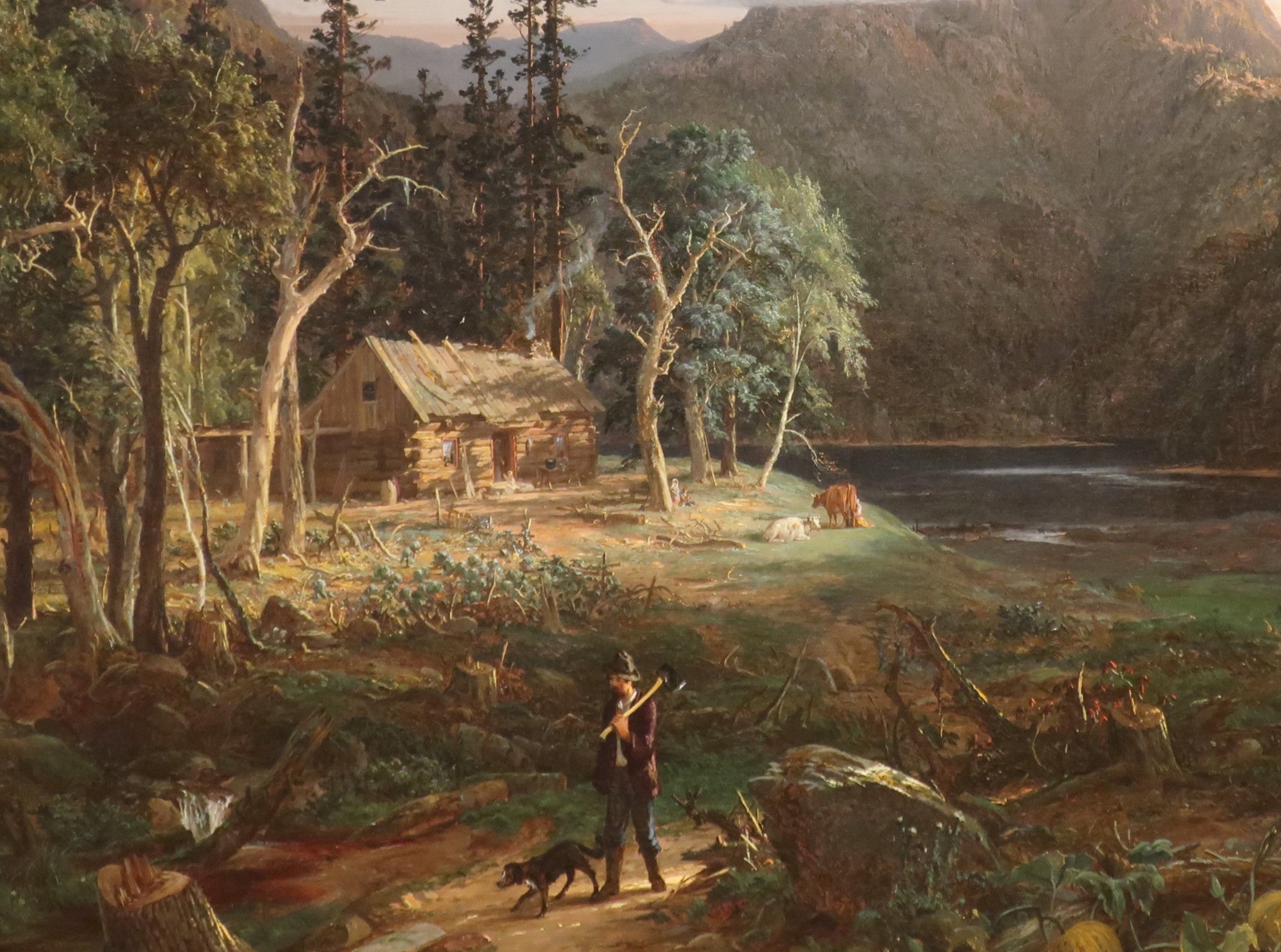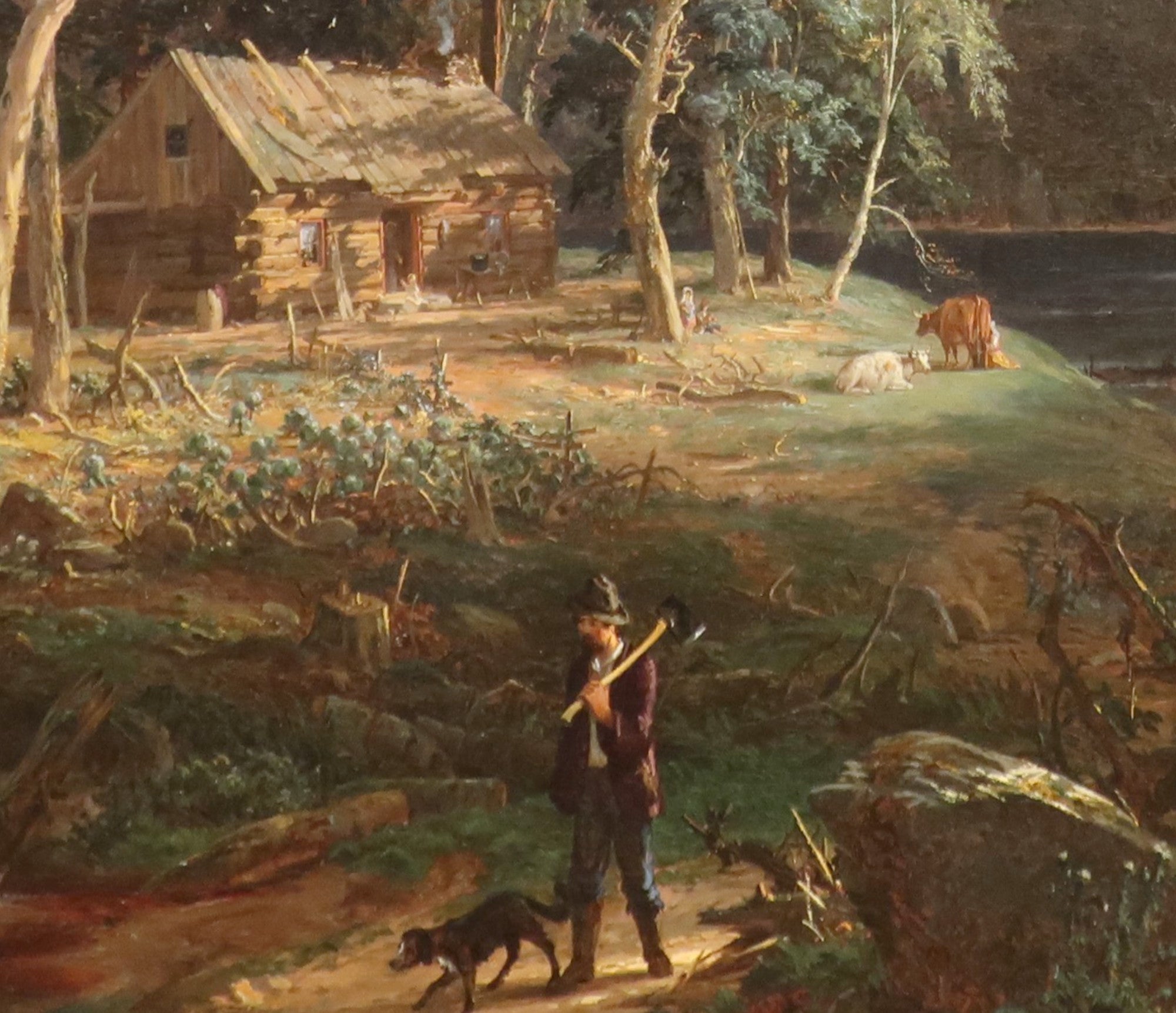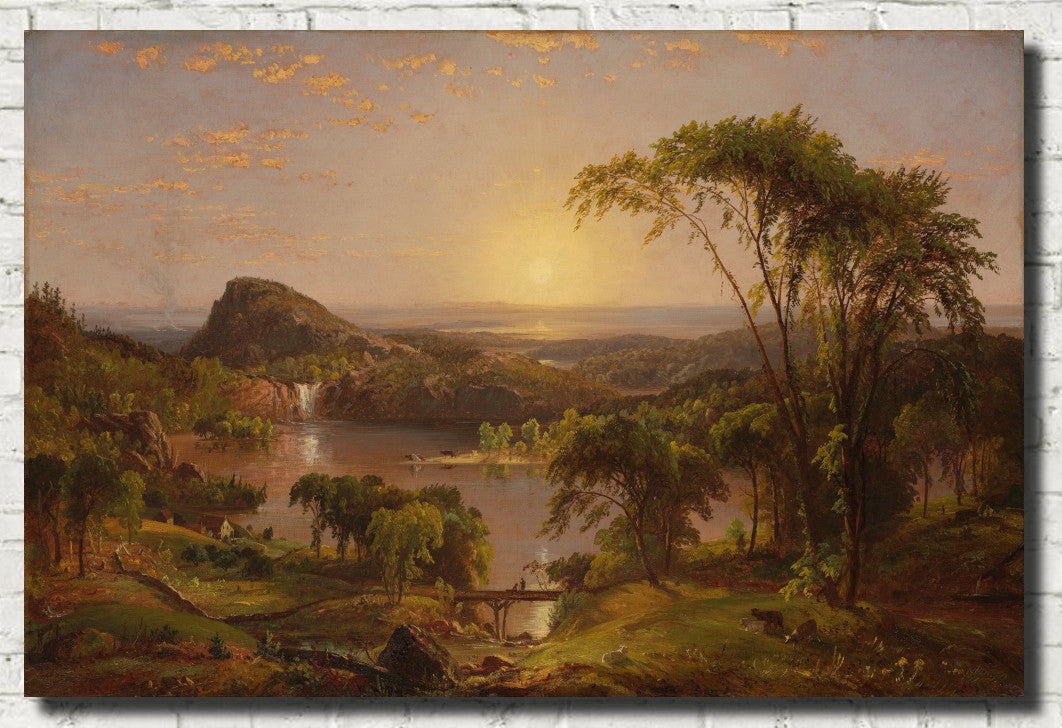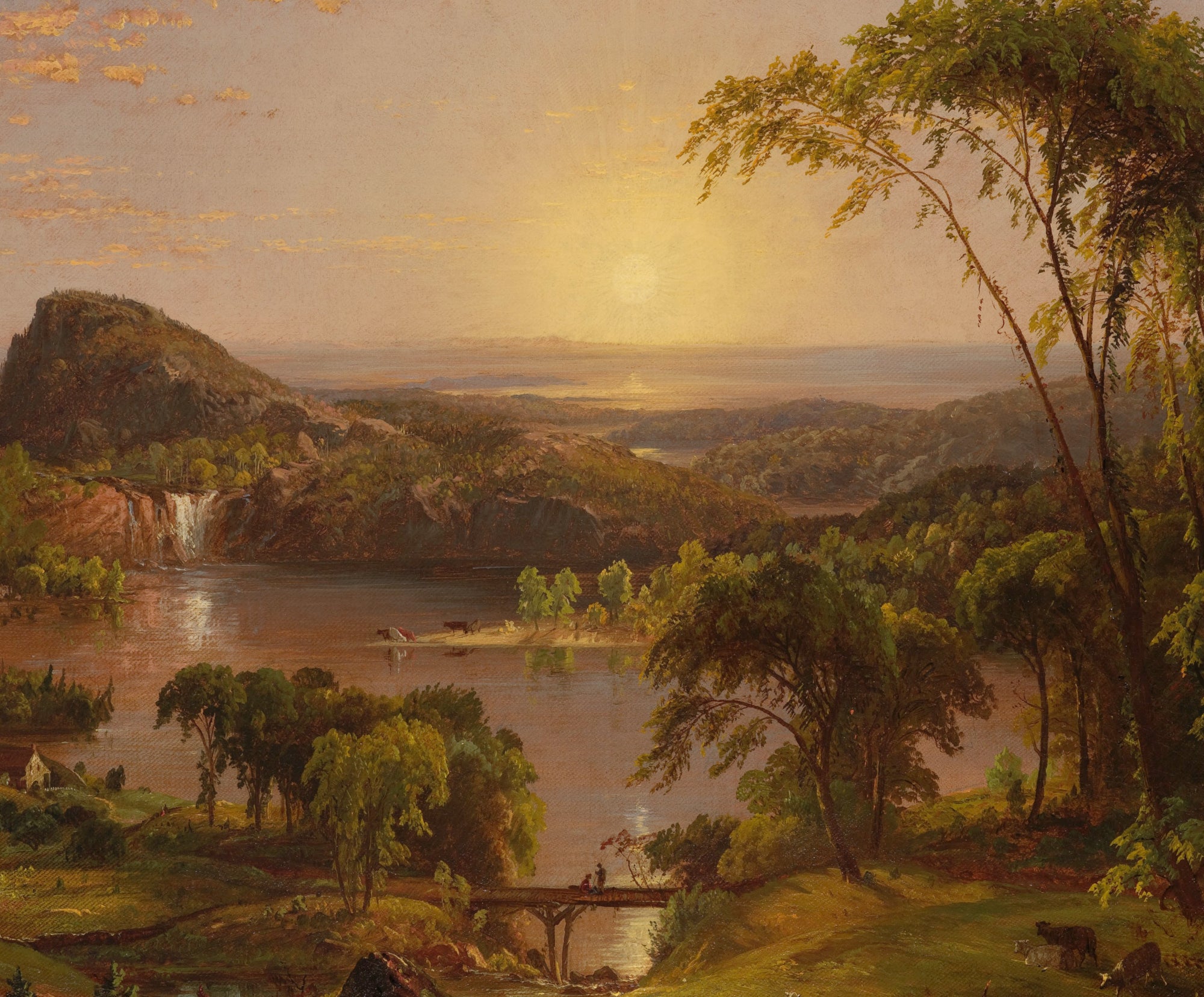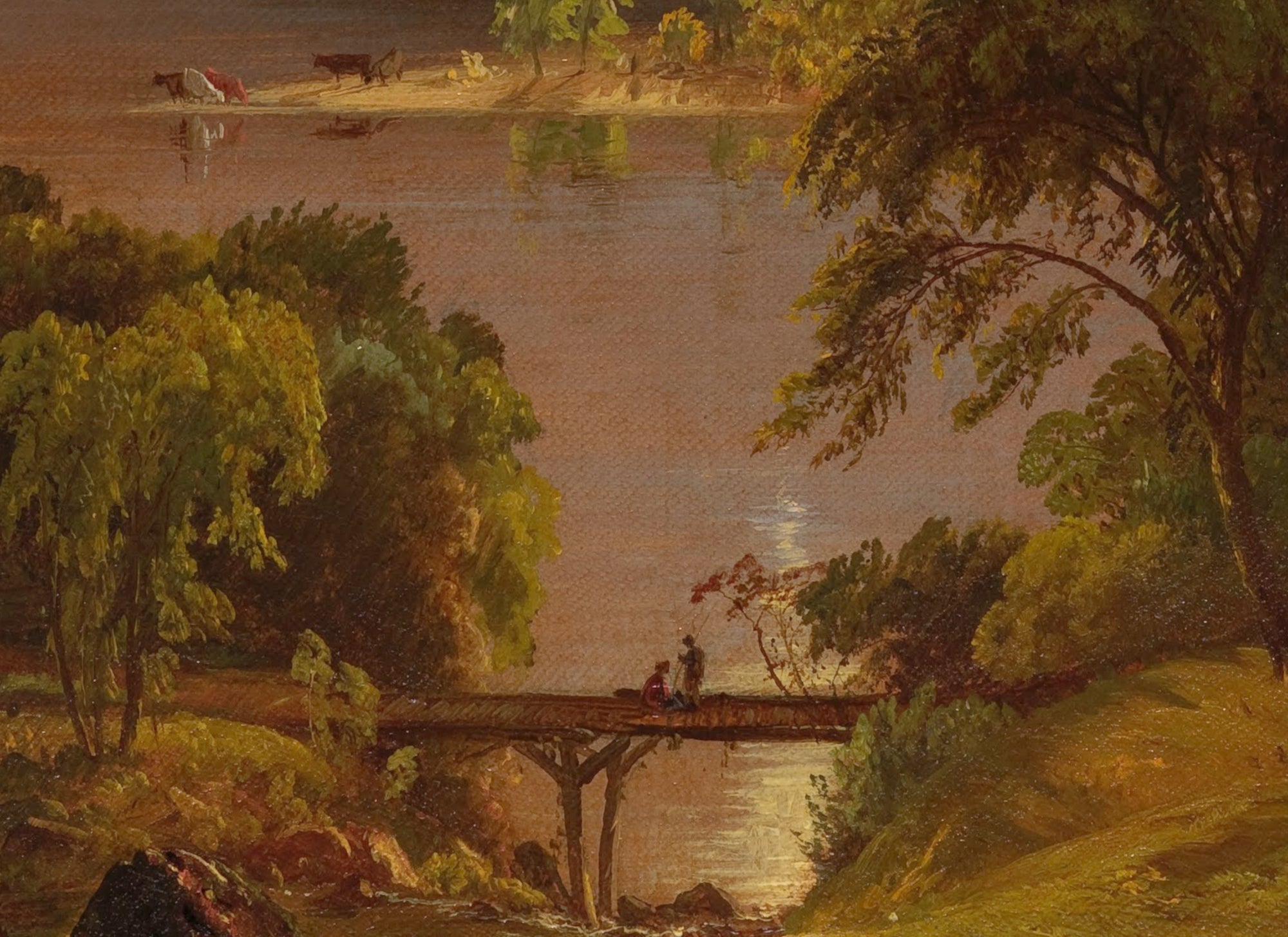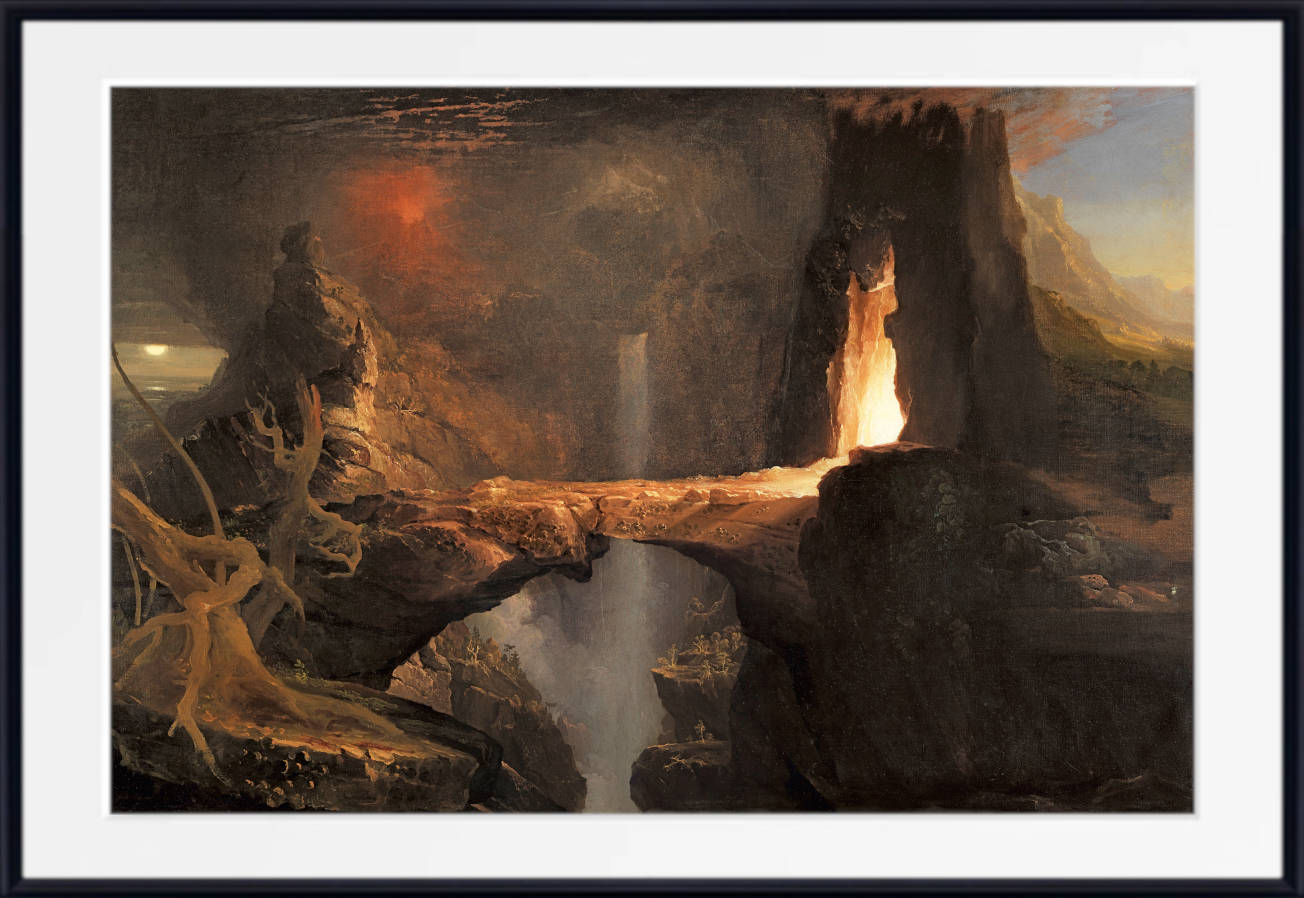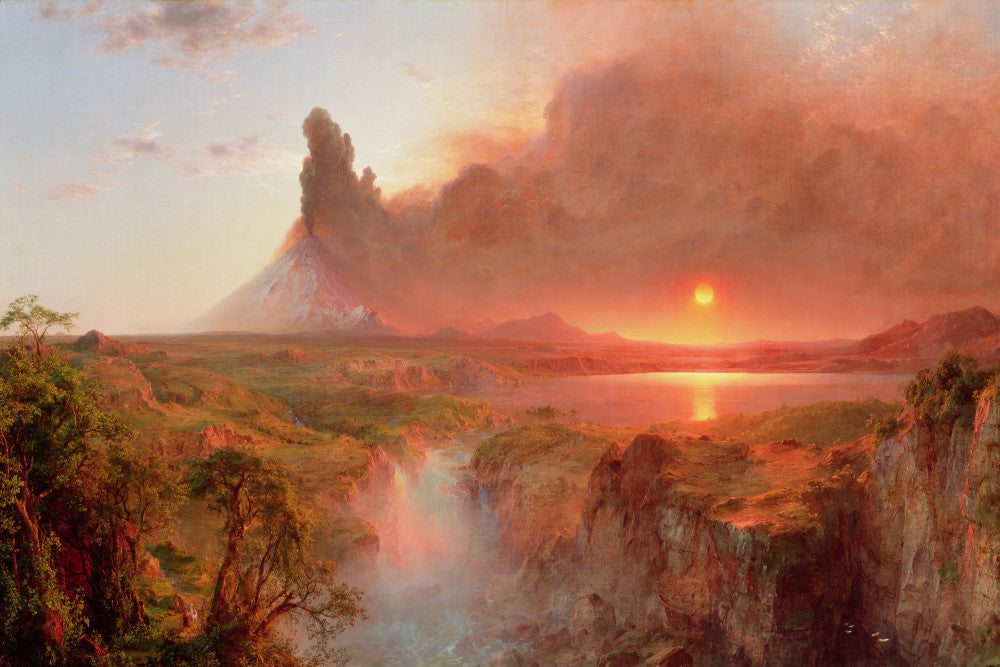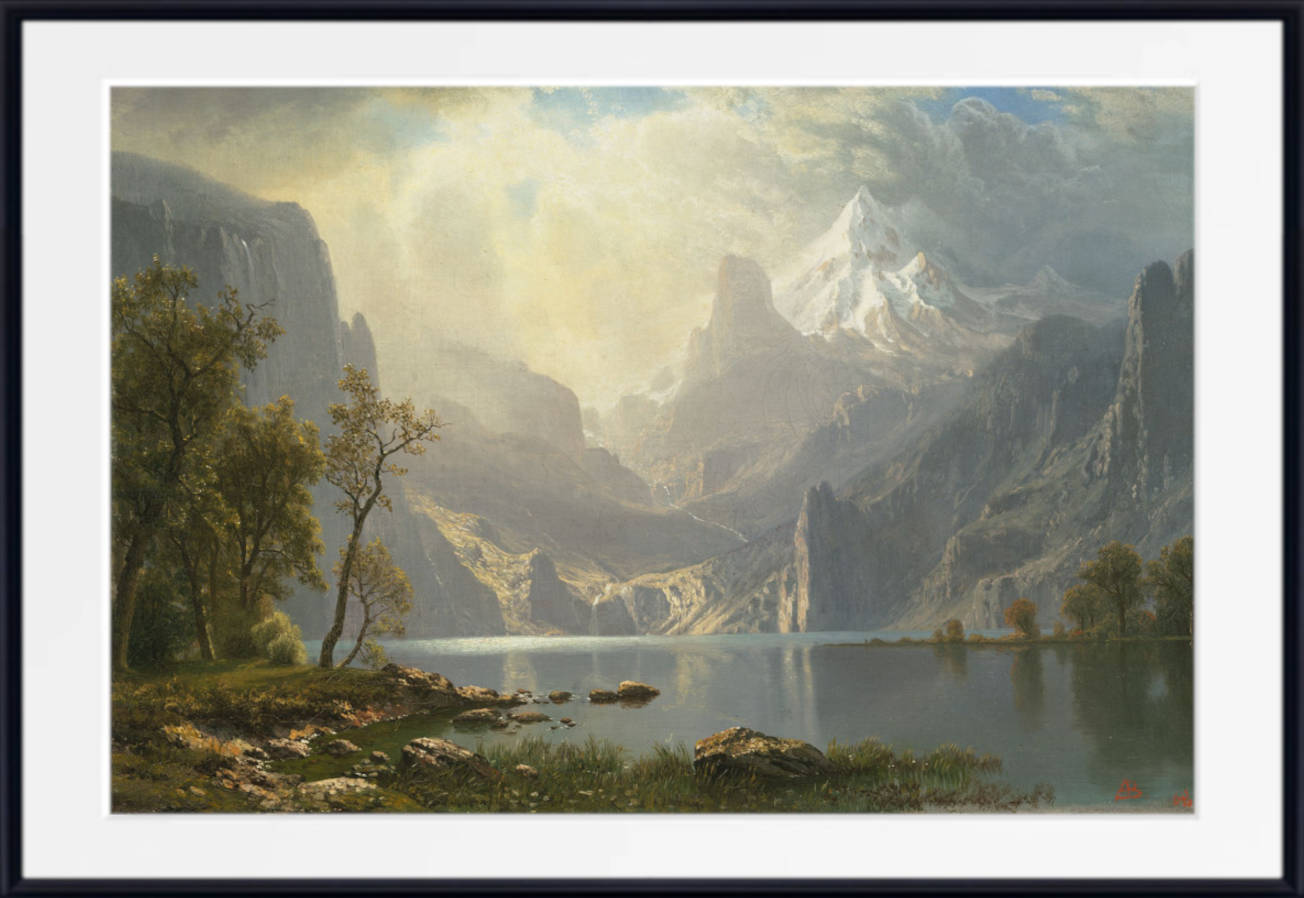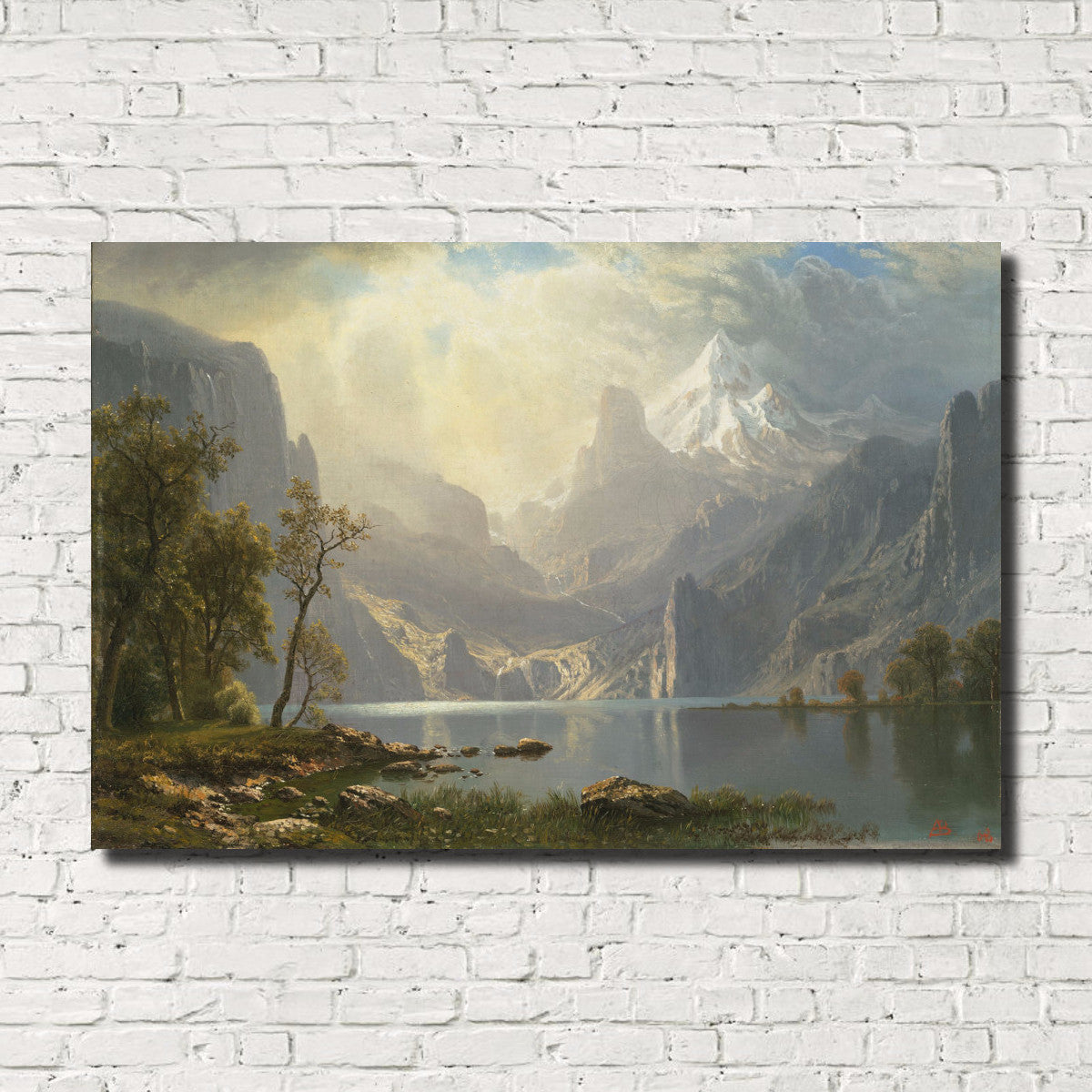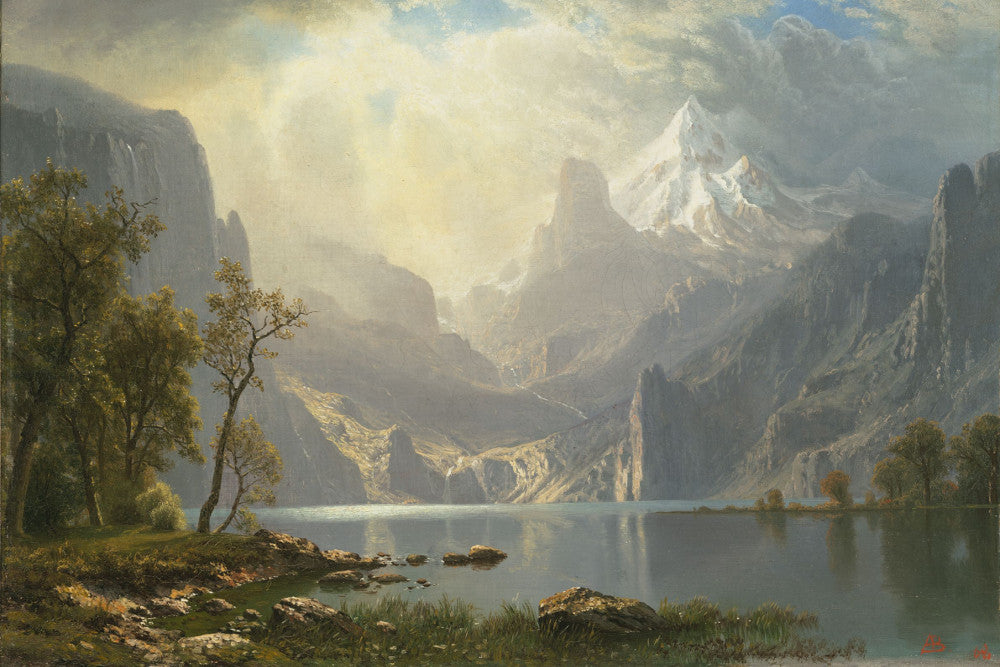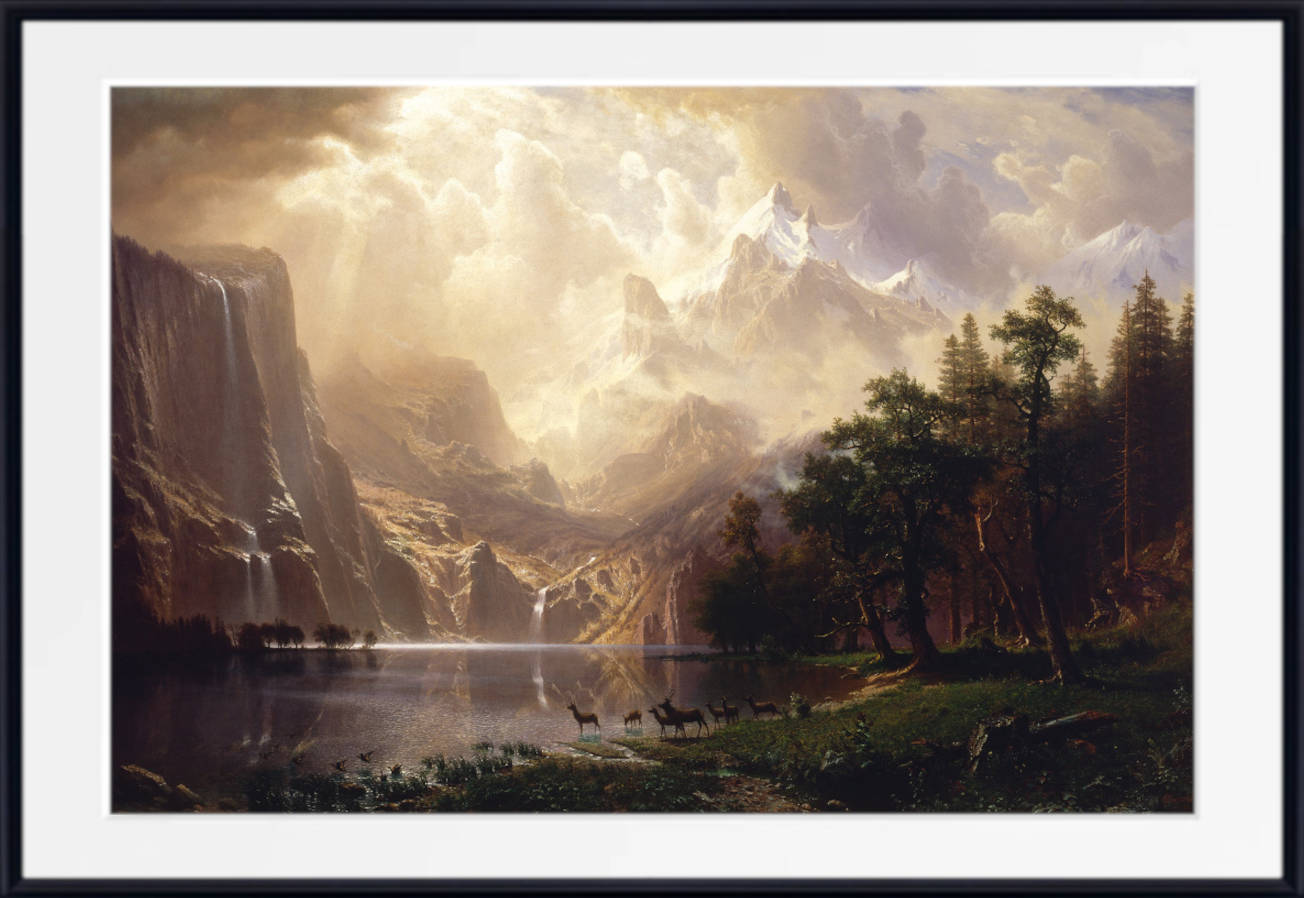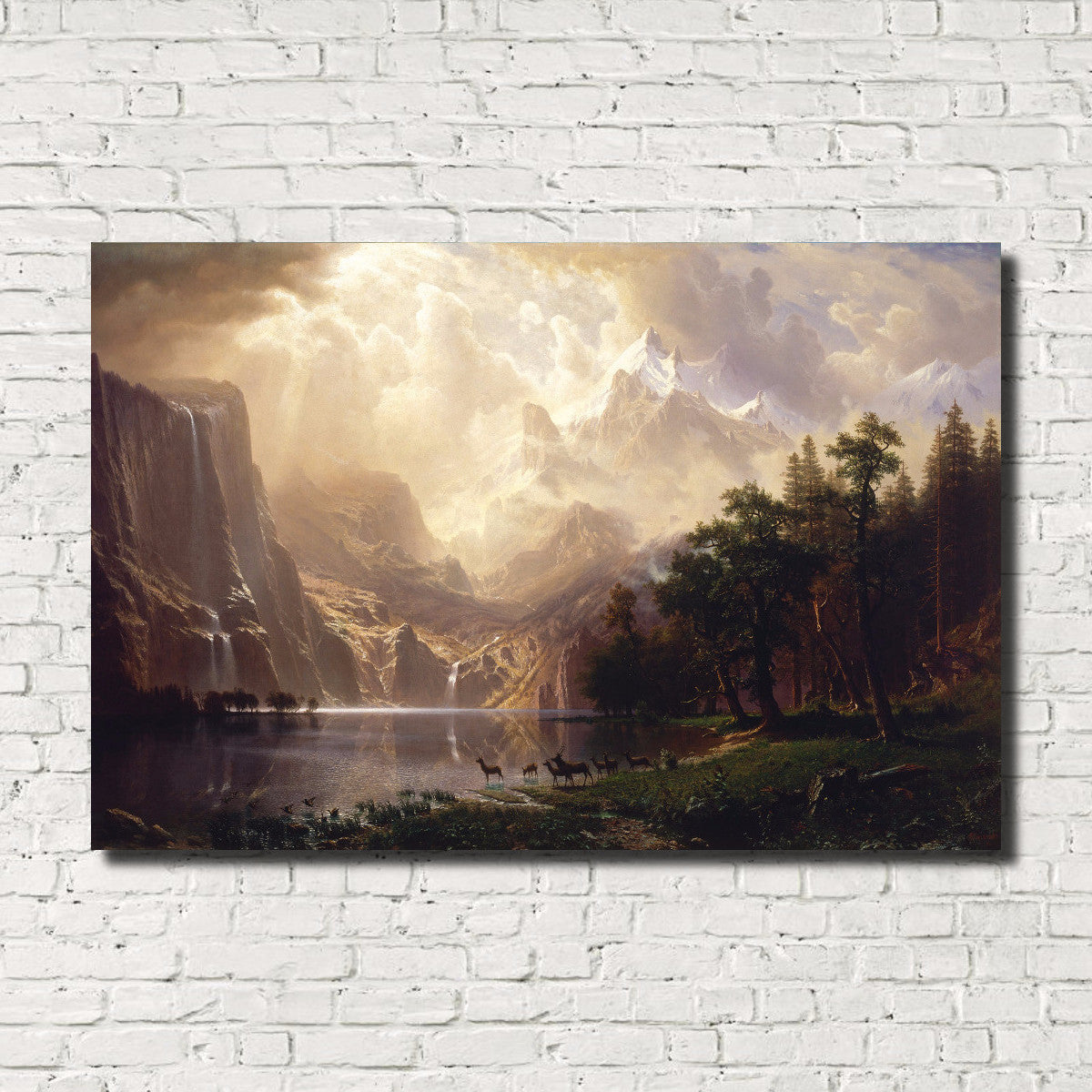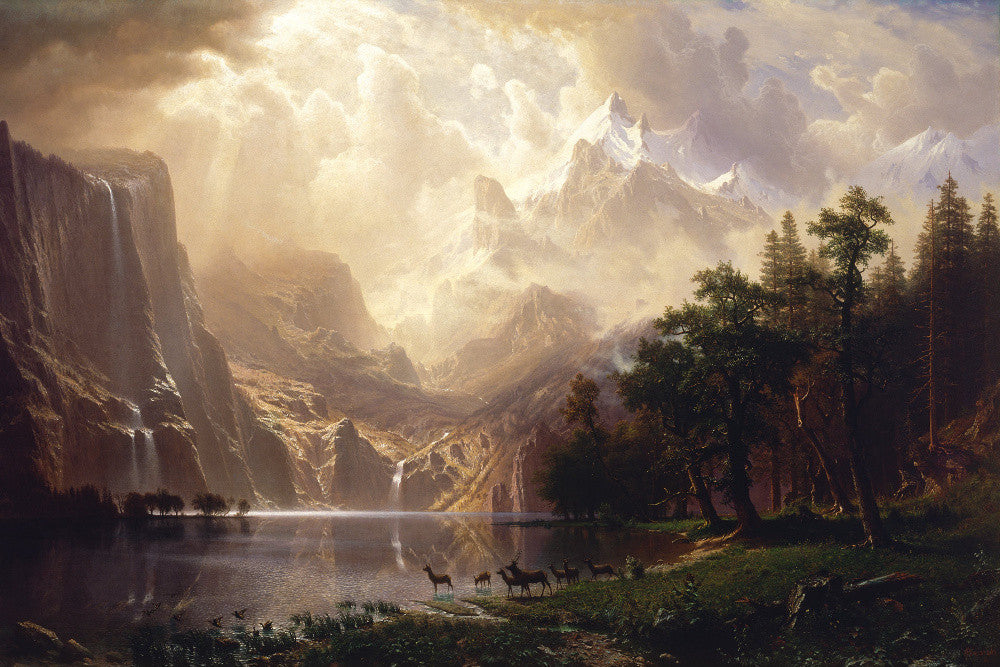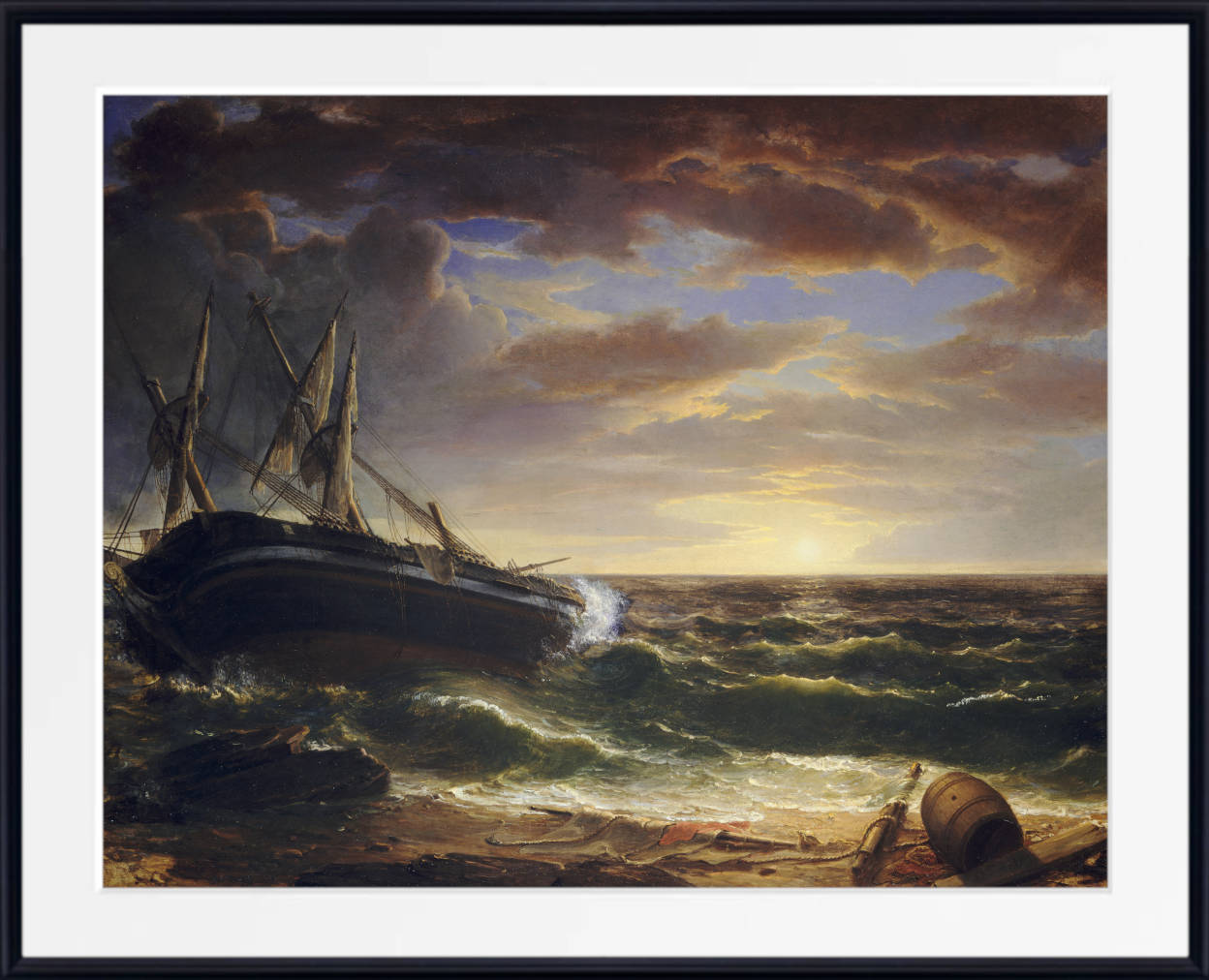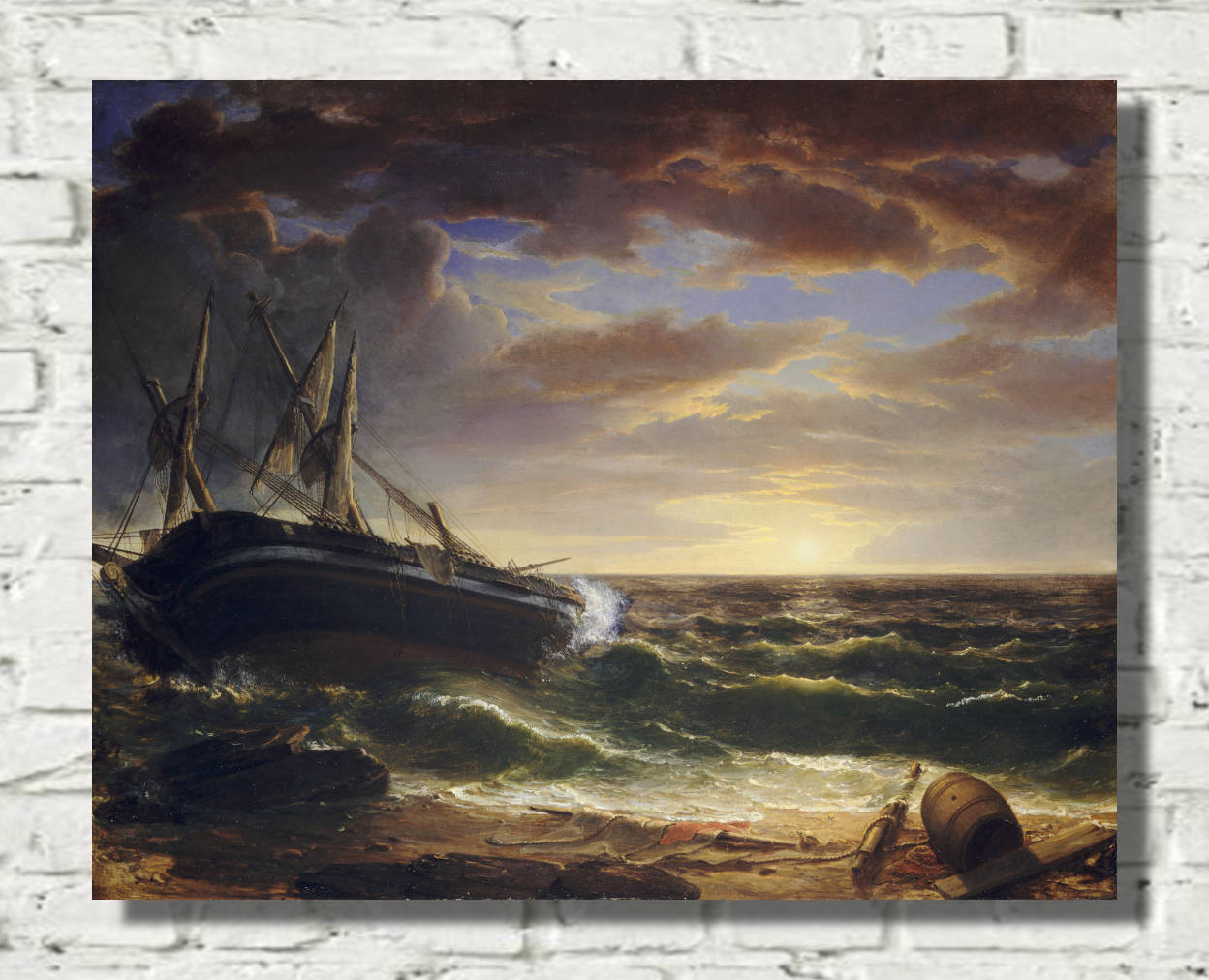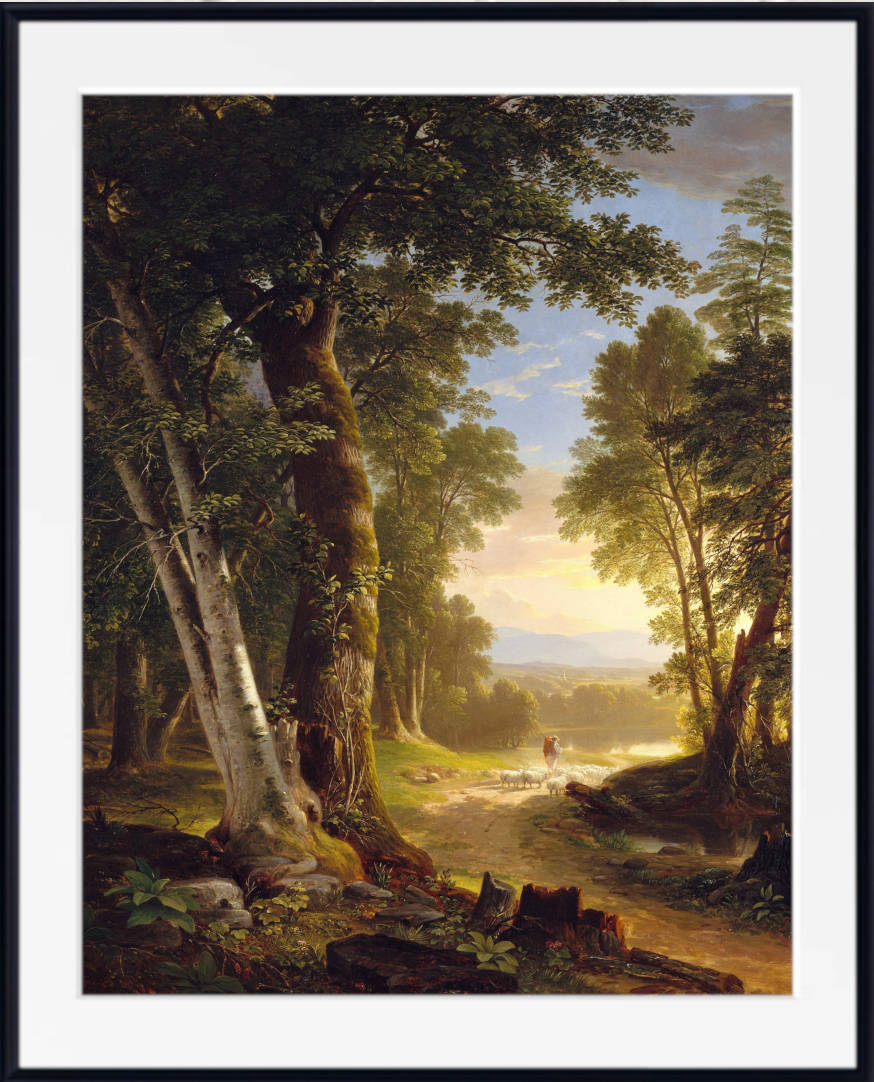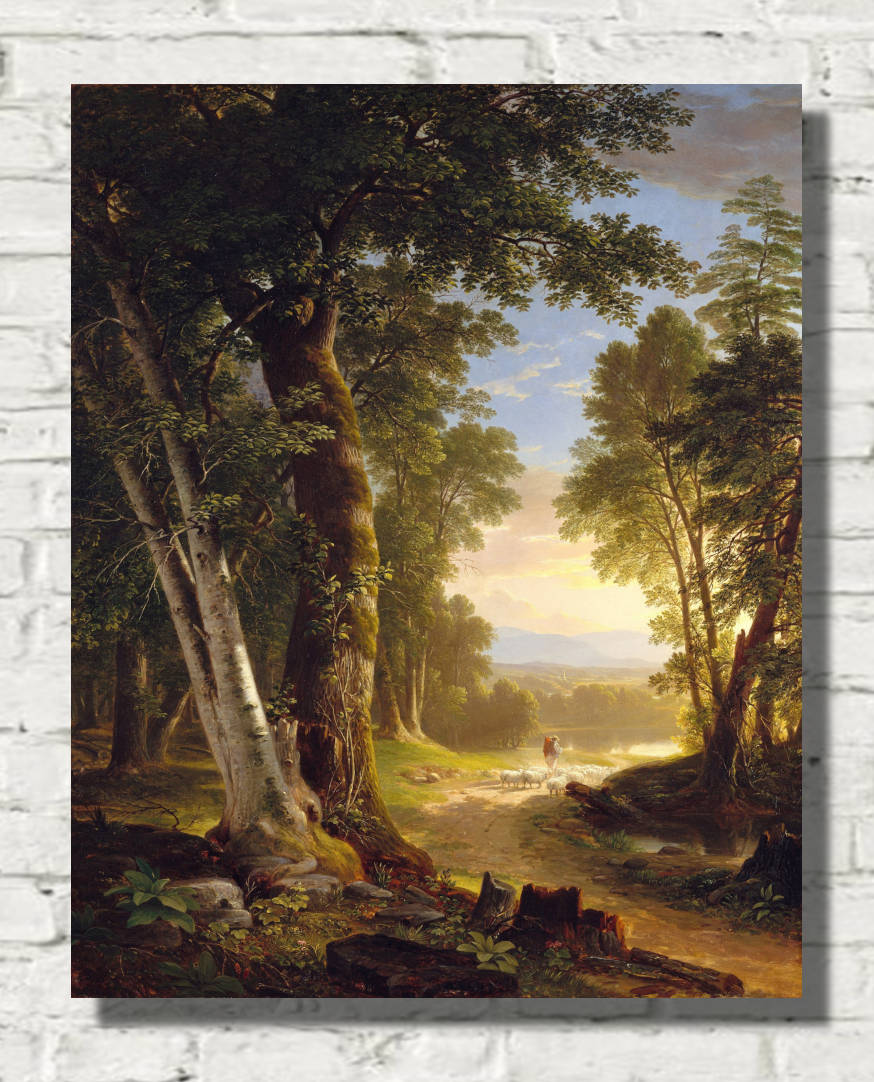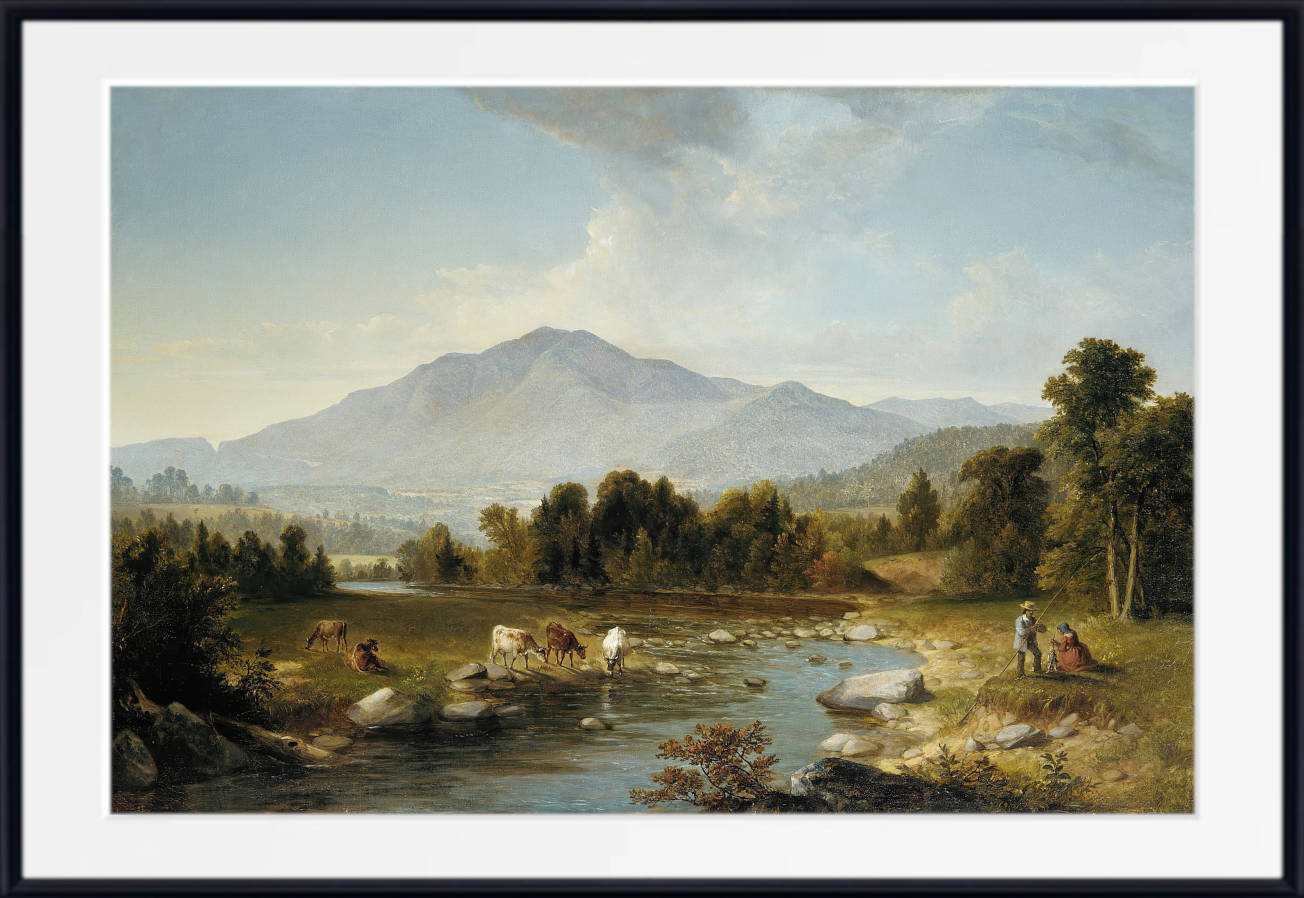The Oxbow (The Connecticut River near Northampton) Thomas Cole
The Hudson River School was a mid-19th century American art movement embodied by a group of landscape painters whose aesthetic vision was influenced by Romanticism. The paintings typically depict the Hudson River Valley and the surrounding area, including the Catskill, Adirondack, and White Mountains. Works by second generation artists expanded to include other locales in New England, the Maritimes, the American West, and South America.
The term Hudson River School is thought to have been coined by the New York Tribune art critic Clarence Cook or by landscape painter Homer Dodge Martin. It was initially used disparagingly, as the style had gone out of favor after the plein-air Barbizon School had come into vogue among American patrons and collectors. Hudson River School paintings reflect three themes of America in the 19th century: discovery, exploration, and settlement. They also depict the American landscape as a pastoral setting, where human beings and nature coexist peacefully. Hudson River School landscapes are characterized by their realistic, detailed, and sometimes idealized portrayal of nature, often juxtaposing peaceful agriculture and the remaining wilderness which was fast disappearing from the Hudson Valley just as it was coming to be appreciated for its qualities of ruggedness and sublimity. In general, Hudson River School artists believed that nature in the form of the American landscape was a reflection of God, though they varied in the depth of their religious conviction. They were inspired by European masters such as Claude Lorrain, John Constable, and J. M. W. Turner. Several painters were members of the Düsseldorf School of painting, others were educated by German Paul Weber

The First Harvest in the Wilderness, Asher Brown Durand (1855)

Dover Plains, Dutchess County, New York, Asher Brown Durand (1848)
Largely influenced by European Romanticism, the Hudson River School intended to convey nature's sublime beauty. Cole's influential "Essay on American Scenery" emphasized the emotive possibilities for landscape painting, writing, "American Scenery is a subject that to every American ought to be of surpassing interest...it is his own land; its beauty, its magnificence, its sublimity - all are his; and how undeserving of such a birthright if he can turn towards it an unobserving eye, an unaffected heart!" To best convey the magnificence of the American landscapes, they favored views of rugged and remote wilderness or of idyllic and lyrical countryside. If man's presence was noted, it was most often favorably depicted as progress and yet dwarfed by the scale of raw nature.
The concept of the sublime is central to Romanticism, considered an ideal by its practitioners. Rejecting the more cerebral narratives of the Neo-Classical style, they calculated their compositions, palettes, and subjects to evoke strong emotions in the viewer. Although this emotional response could be geared towards fear or repulsion, landscape artists most commonly aspired to awe and wonder at the beauty of nature and humility before its power. The sublime was achieved in this direct appeal to the senses through representations of the extraordinary. Unlike French Romanticism that was often connected to revolutionary impulses in society, Romanticism in the Hudson River School was more closely tied to contemporary German and British examples of symbolic and meaningful landscape painting. At the same time, however, the style was intrinsically nationalistic, connected to a rising sense of American identity by conveying the unique beauty of the native landscape. While painters could not rival the history of their European counterparts, their large paintings of expansive, untamed lands spoke of American potential and promise.
Thomas Cole (1801-1848)
Thomas Cole is generally acknowledged as the founder of the School. He took a steamship up the Hudson in the autumn of 1825, stopping first at West Point then at Catskill landing. He hiked west high into the eastern Catskill Mountains of New York to paint the first landscapes of the area. The first review of his work appeared in the New York Evening Post on November 22, 1825. Cole was from England and the brilliant autumn colors in the American landscape inspired him. His close friend Asher Brown Durand became a prominent figure in the school. A prominent element of the Hudson River School was its themes of nationalism, nature, and property. Adherents of the movement also tended to be suspicious of the economic and technological development of the age.
The Second Generation
The second generation of Hudson River School artists emerged after Cole's premature death in 1848; its members included Cole's prize pupil Frederic Edwin Church, John Frederick Kensett, and Sanford Robinson Gifford. Works by artists of this second generation are often described as examples of Luminism. Kensett, Gifford, and Church were also among the founders of the Metropolitan Museum of Art in New York City. Most of the finest works of the second generation were painted between 1855 and 1875. Artists such as Frederic Edwin Church and Albert Bierstadt were celebrities during that time. They were both influenced by the Düsseldorf school of painting, and Bierstadt had studied in that city for several years. Thousands of people would pay 25 cents per person to view paintings such as Niagara and The Icebergs. The epic size of these landscapes was unexampled in earlier American painting and reminded Americans of the vast, untamed, and magnificent wilderness areas in their country. This was the period of settlement in the American West, preservation of national parks, and establishment of green city parks.

Aurora Borealis, Frederic Edwin Church (1865)
Concepts, Styles, and Trends of The Hudson River School:
Allegorical Painting
Following the early successes of his landscape paintings, Cole aimed to emulate history painters by layering his compositions with symbolic meaning. His The Course of Empire (1833-1836), five paintings depicting the rise and fall of a civilization, exemplifies this turn to allegorical or metaphorical painting. Indeed, a number of Hudson River School painters developed an allegorical theme in their works in order to convey more complex messages. Albert Bierstadt's Last of the Buffalo (1888) is both an accurate depiction of the topographical features of the Great Plains and an imagined buffalo hunt, designed as an allegory of the destruction of the natural world and a vanishing way of life.

The Consummation, The Course of Empire, Thomas Cole (1836)

Cathedral Rocks, Yosemite Valley, Albert Bierstadt (1872)
Rocky Mountain School
In the 1860s, Bierstadt and Thomas Moran turned their attention to the American West, earning them (along with Thomas Hill and William Keith) the title of the Rocky Mountain School. They were not just interested in depicting the Western landscape, but viewed it as symbolizing the vast sense of promise of a nation that was expanding westward. Many of their paintings were composites, drawing together a selection of ideal views, in order to convey the uniqueness of the Rocky Mountains, the Yellowstone area, and the Yosemite Valley to an East coast audience. Artists often accompanied scientific expeditions, like Bierstadt's 1859 expedition to the Rocky Mountains in Wyoming or Moran's 1871 United States Geological Survey of Yellowstone. As a result, their artwork was integrally connected to a sense of national discovery. It also influenced the preservation of these areas: the enormous popularity of Moran's The Grand Canyon of the Yellowstone (1872) gave impetus to the movement to create Yellowstone National Park.
Luminism
Focusing on the effects of light, Luminist painters most often depicted water scenes from an aerial perspective, emphasizing a finished reflective surface without visible brushstrokes. The artists were influenced by the Transcendentalist philosophy that contemplation of nature led to spiritual truth. Like Impressionism, Luminism emphasized the effects of light but differed in its attention to precise detail, its total concealment of brushstrokes, and its quiet, contemplative view of nature; although they are contemporary, the two movements were not connected. Indeed, the artists who adopted this style did not refer to themselves as Luminists; the term originated in the 1950s.

Beach at Beverly, John Frederick Kensett (1872)
In the 1870s, the Hudson River School fell out of fashion, as the influence of the Barbizon School and Impressionism dominated the art world. In comparison, Hudson River School realism and mimesis seemed out of date, sometimes sentimental, or of merely historical interest. Yet, while artistically unfashionable, the school had a profound cultural influence, popularizing its wilderness ideal, which encouraged preservation efforts and the development of national parks. Olana, Church's expansive estate overlooking the Hudson River, has been preserved as a historic landmark. Home to a museum today, visitors can tour Church's home and the grounds and view installations of historical and contemporary art inspired by the Hudson River School. Thomas Cole's home in the Catskills has also been maintained as a museum.
The Hudson River School - Famous Artists

Thomas Cole
(1801-1848)

Asher Brown Durand
(1796-1886)

Jasper Francis Cropsey
(1823-1900)

Frederic Edwin Church
(1826-1900)

John Frederick Kensett
(1816-1872)

Thomas Moran
(1837-1926)

Thomas Hill
(1829-1908)

Albert Bierstadt
(1830-1902)

Sanford Robinson Gifford
(1823-1880)

George Inness
(1825-1894)

Martin Johnson Heade
(1819-1904)

Worthington Whittredge
(1820-1910)







